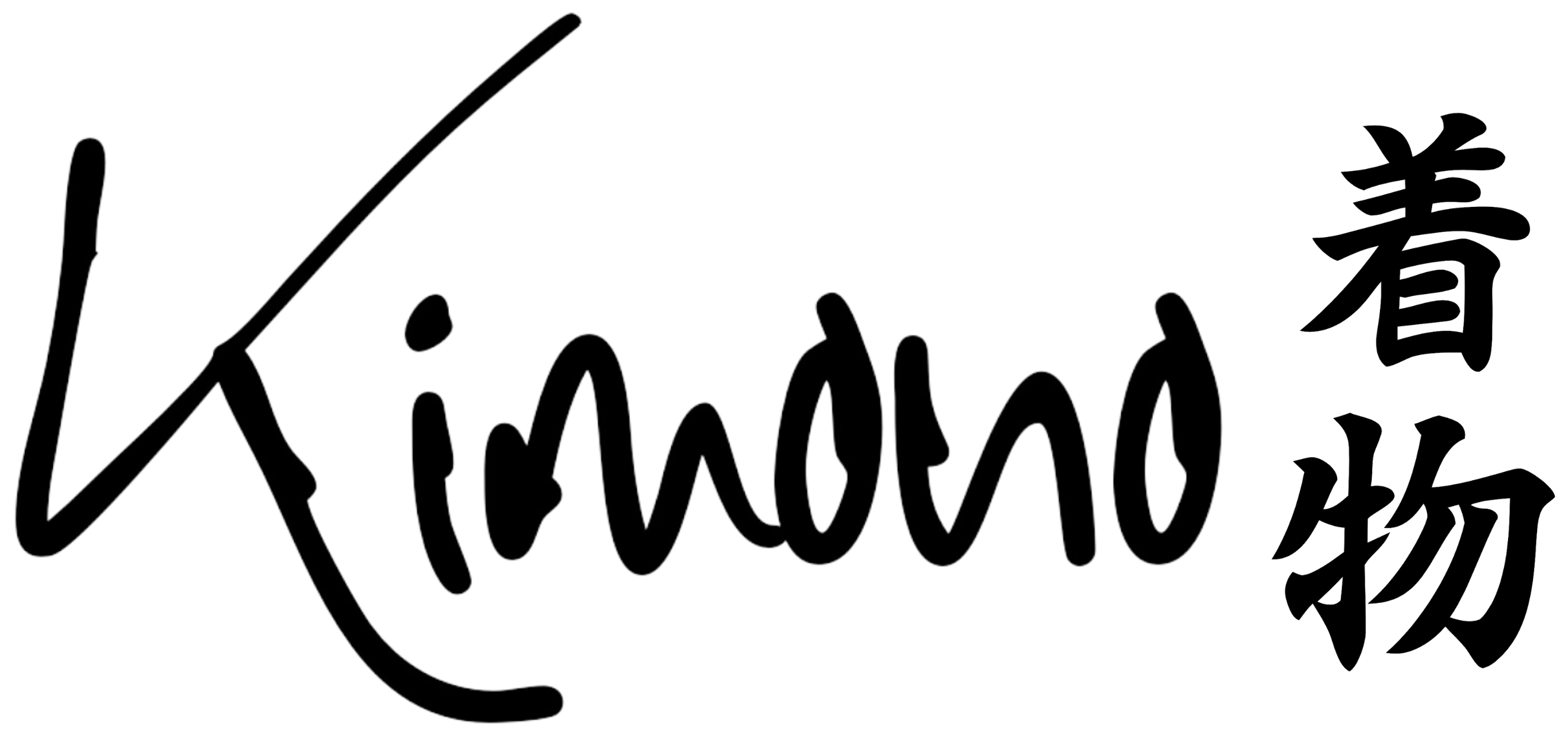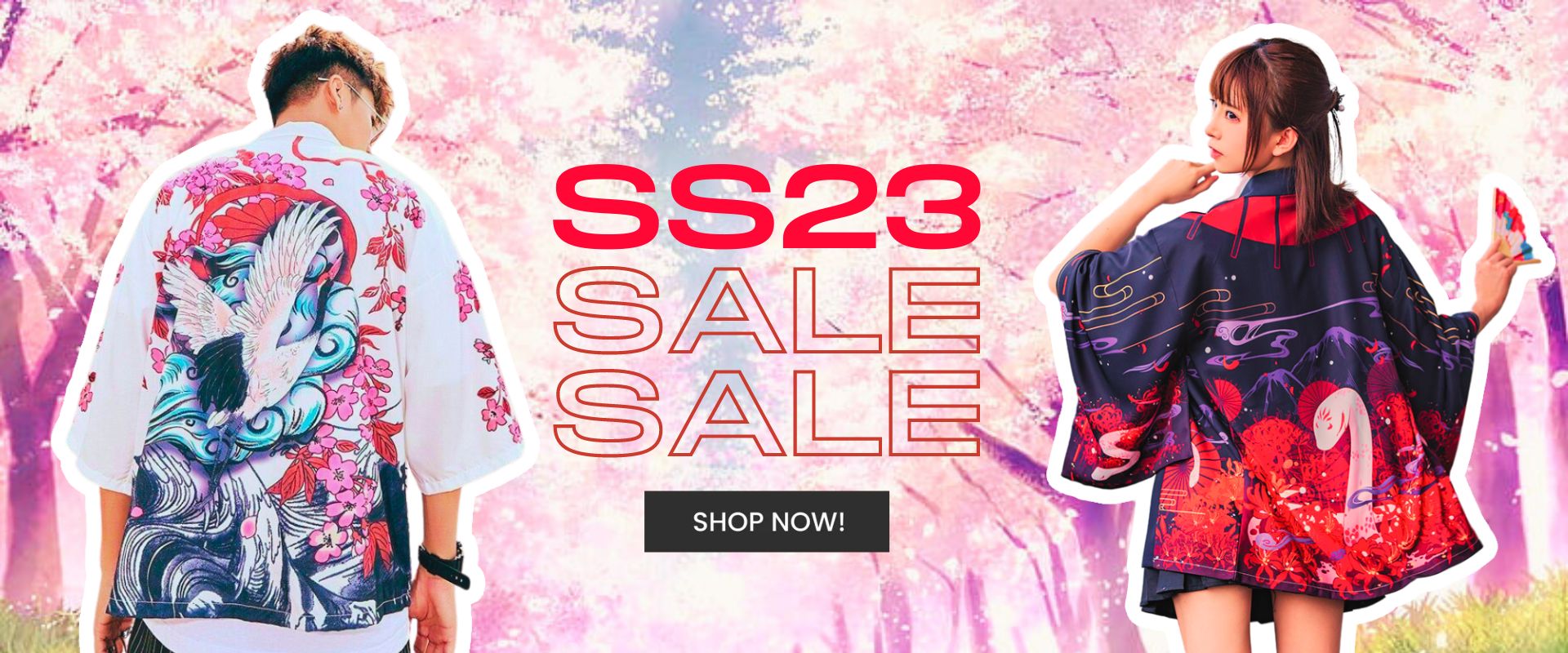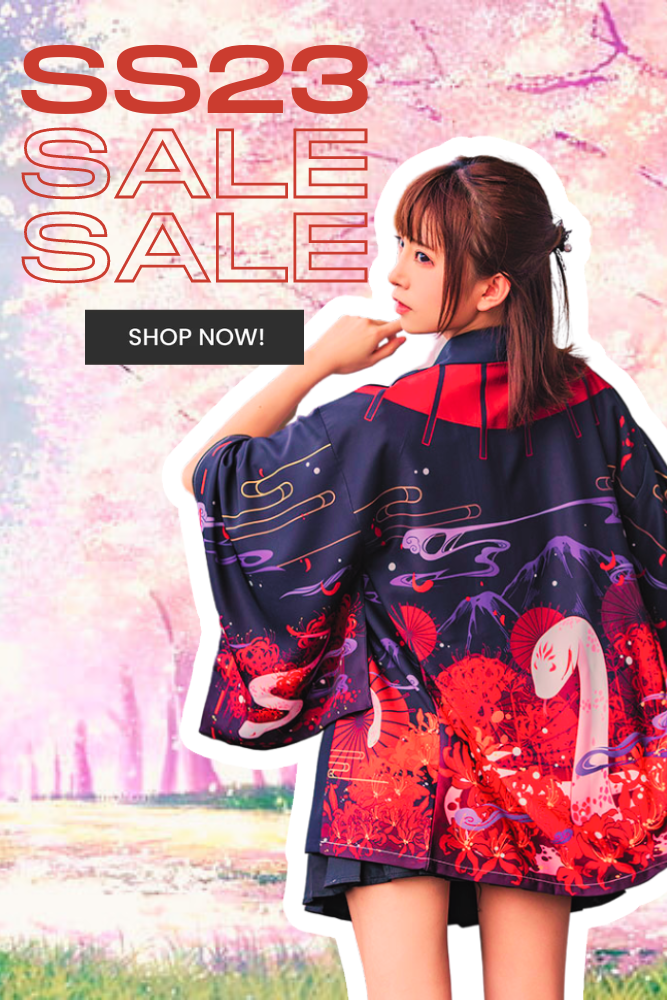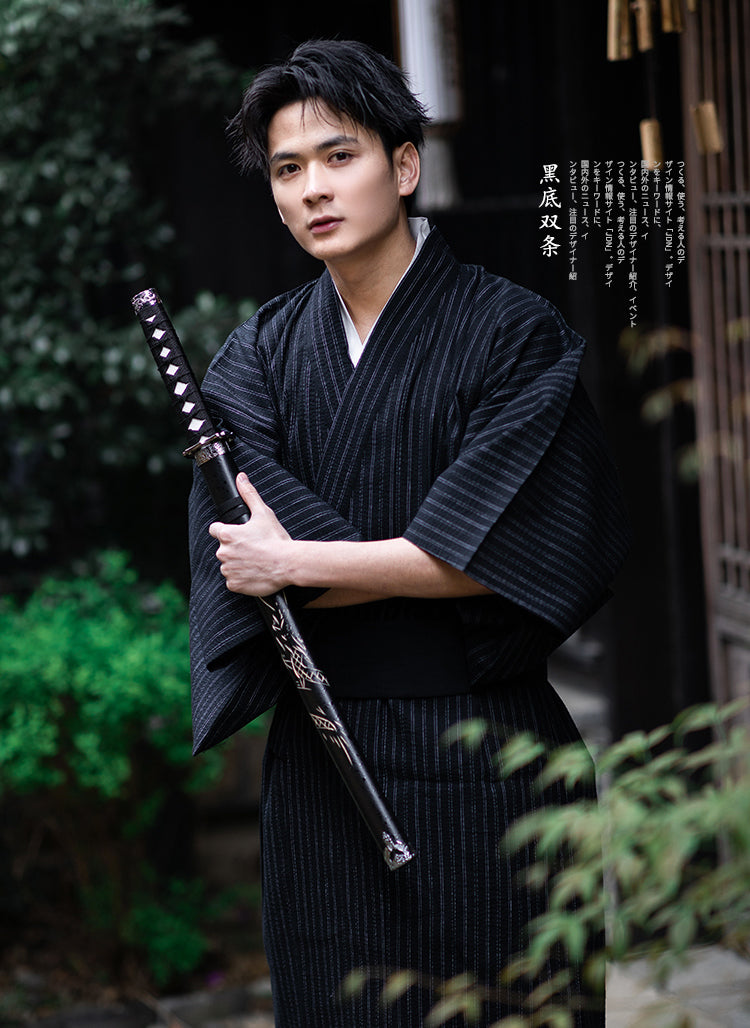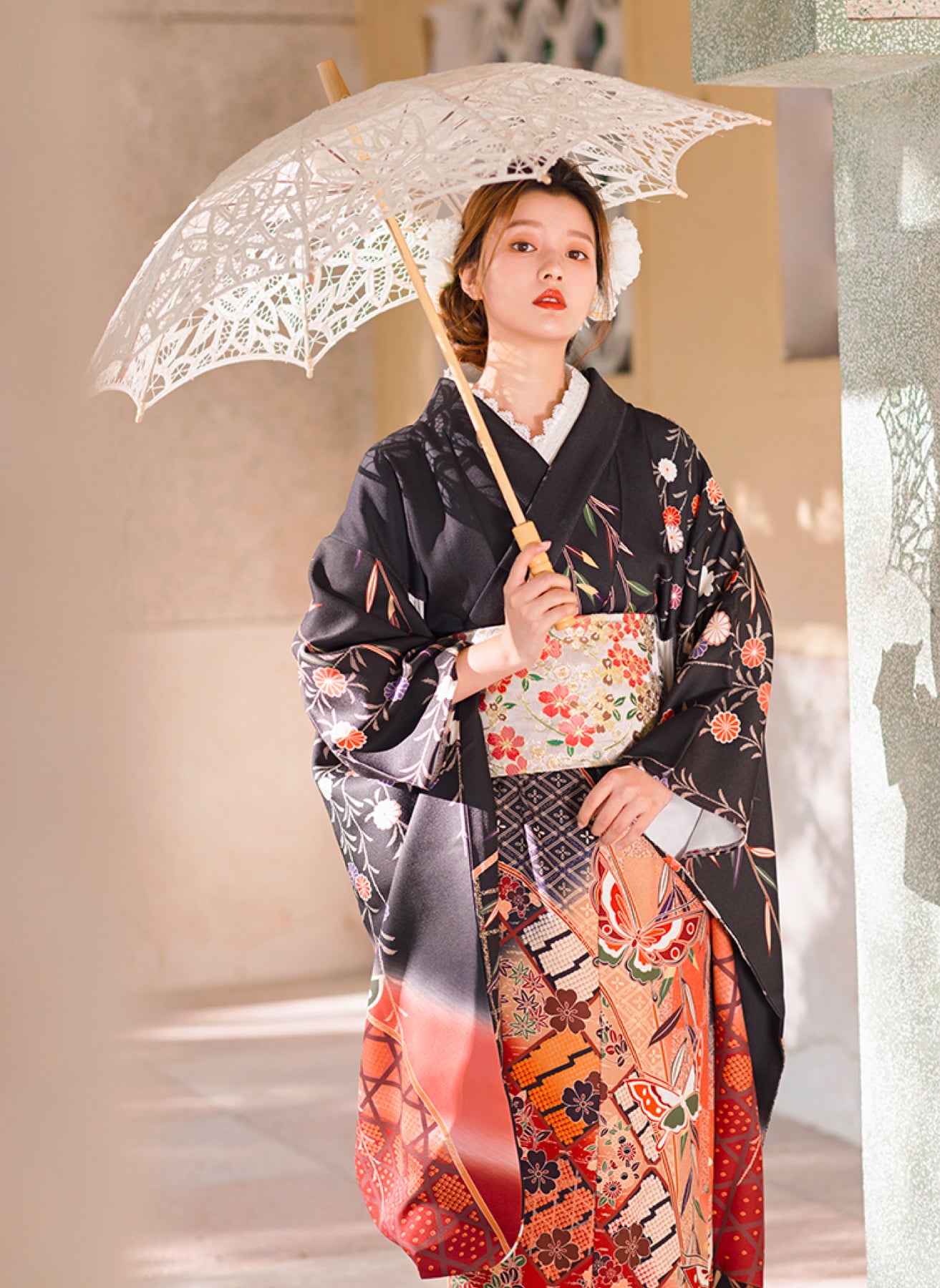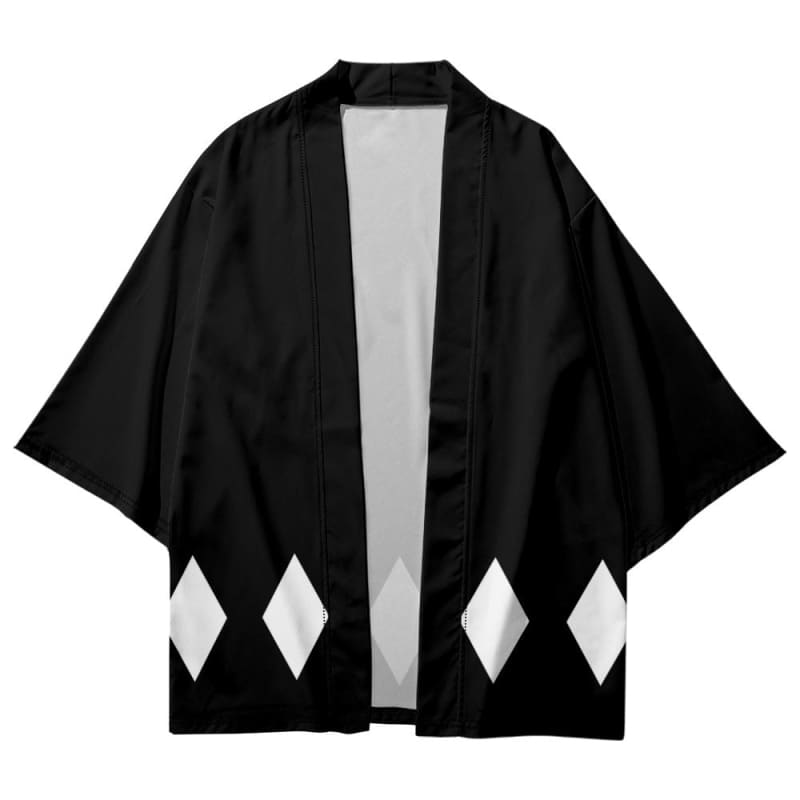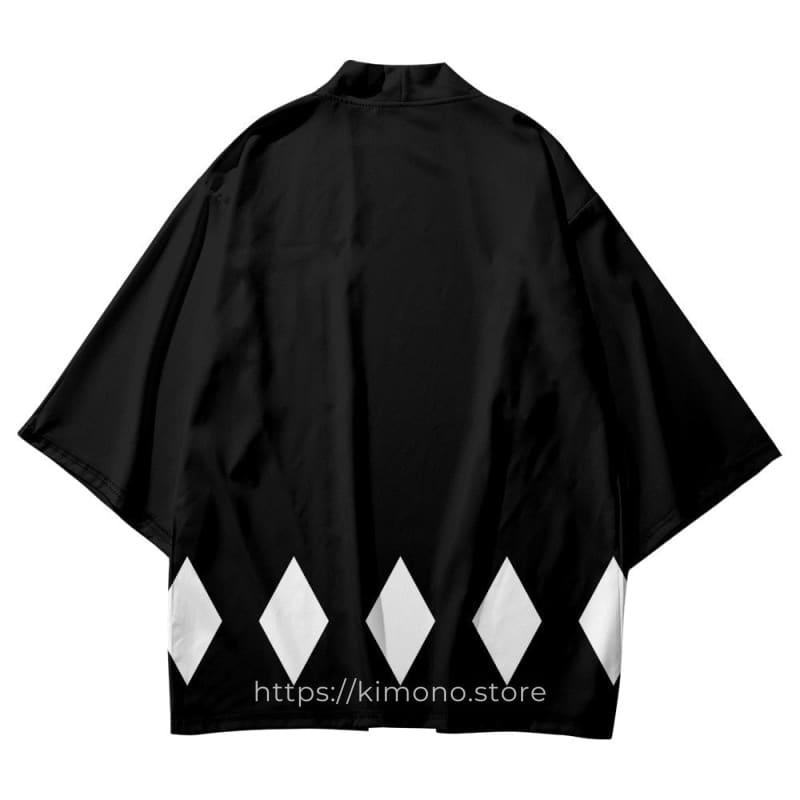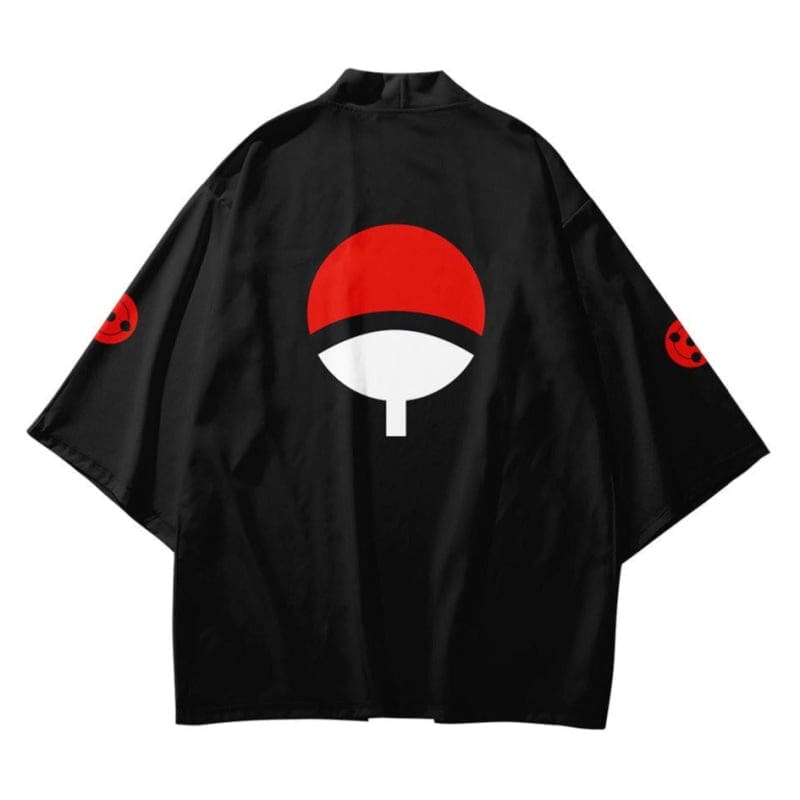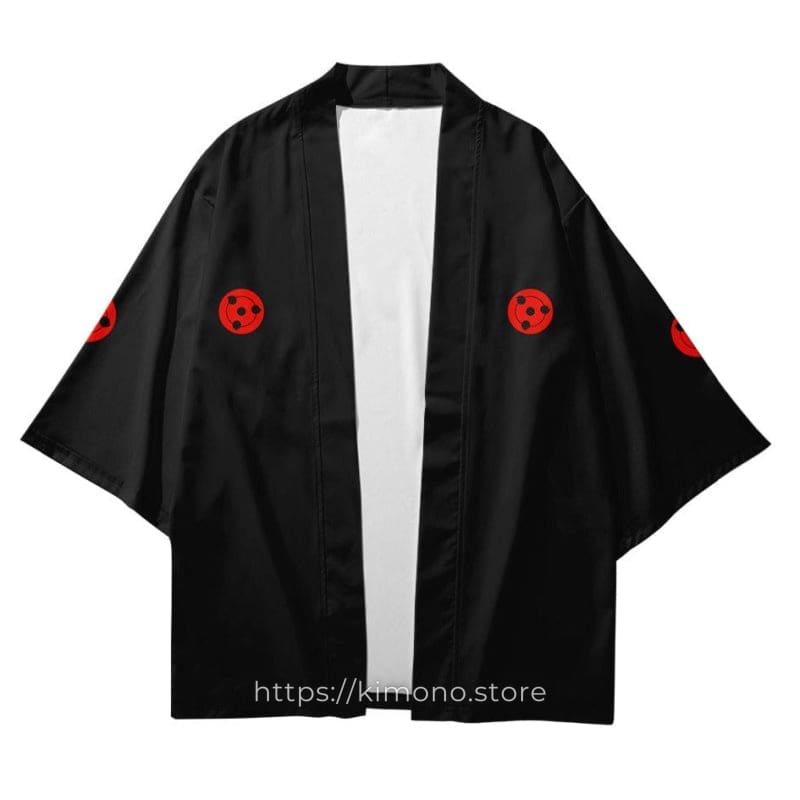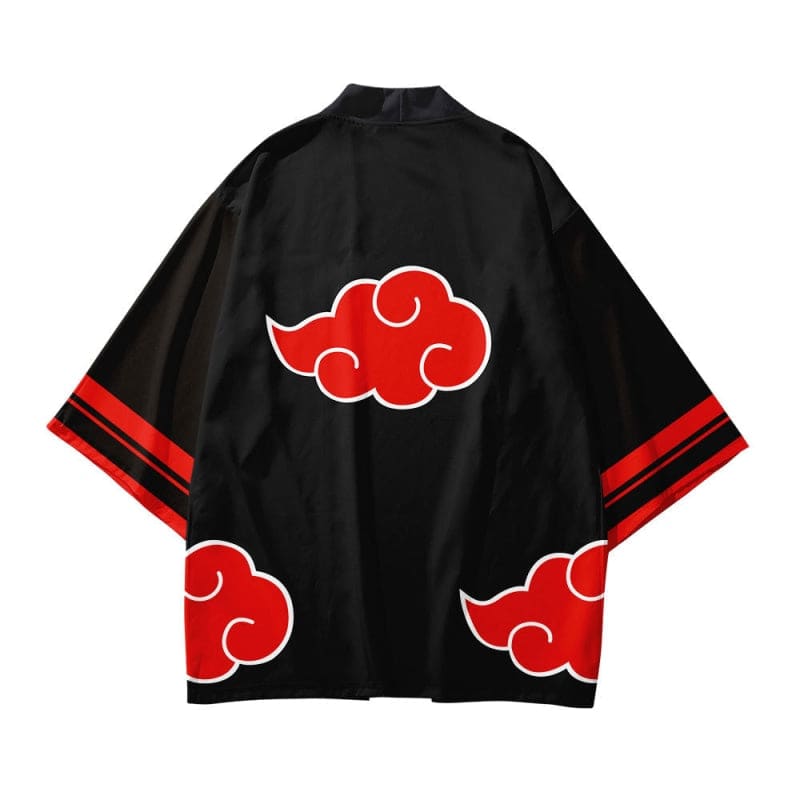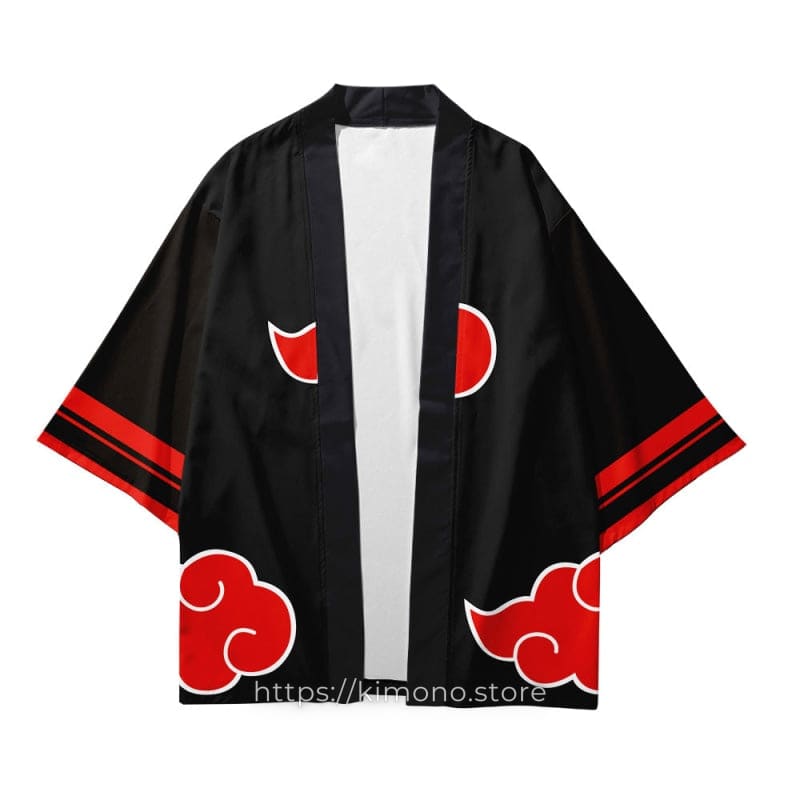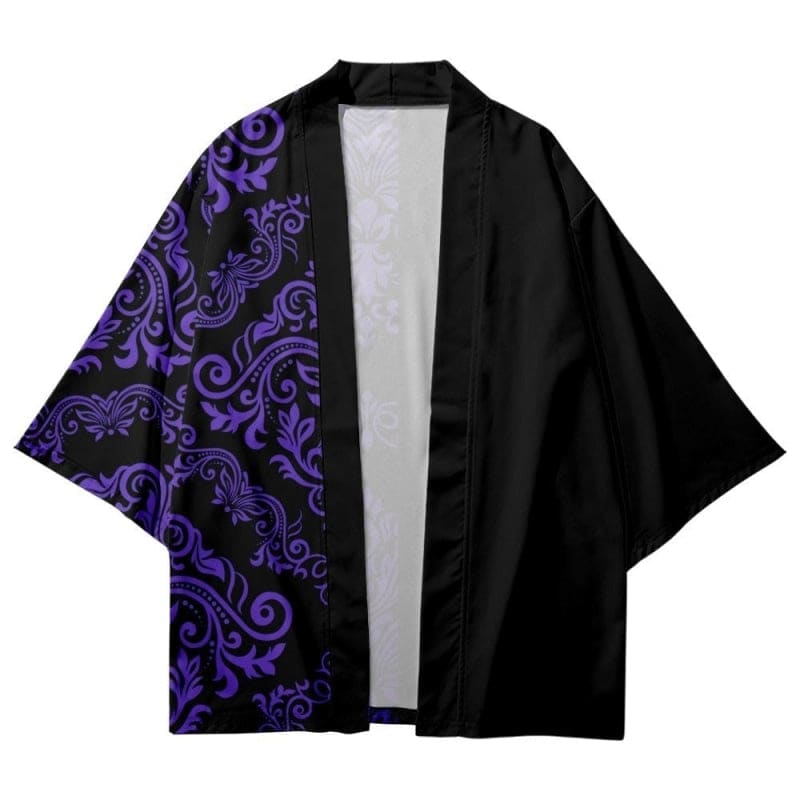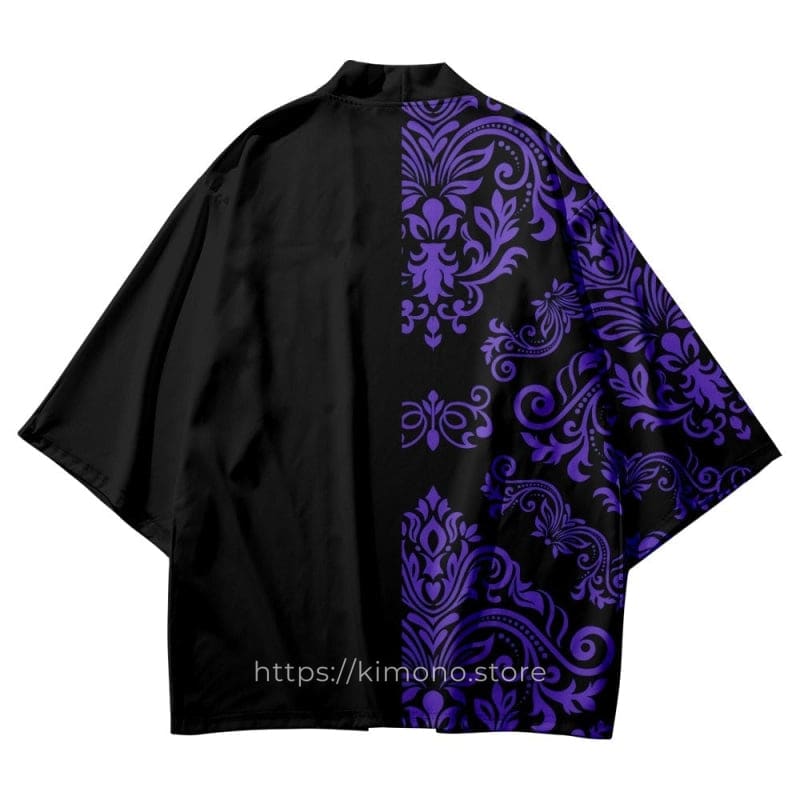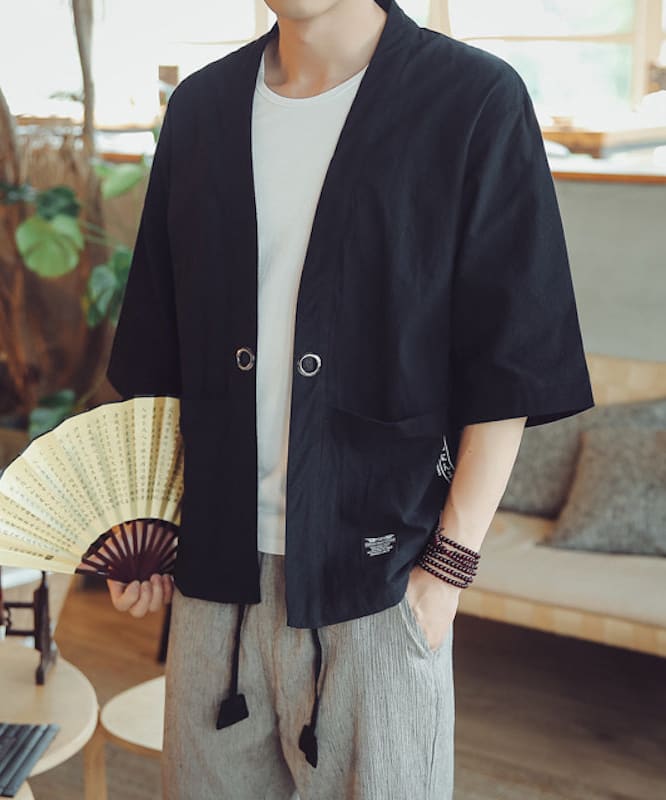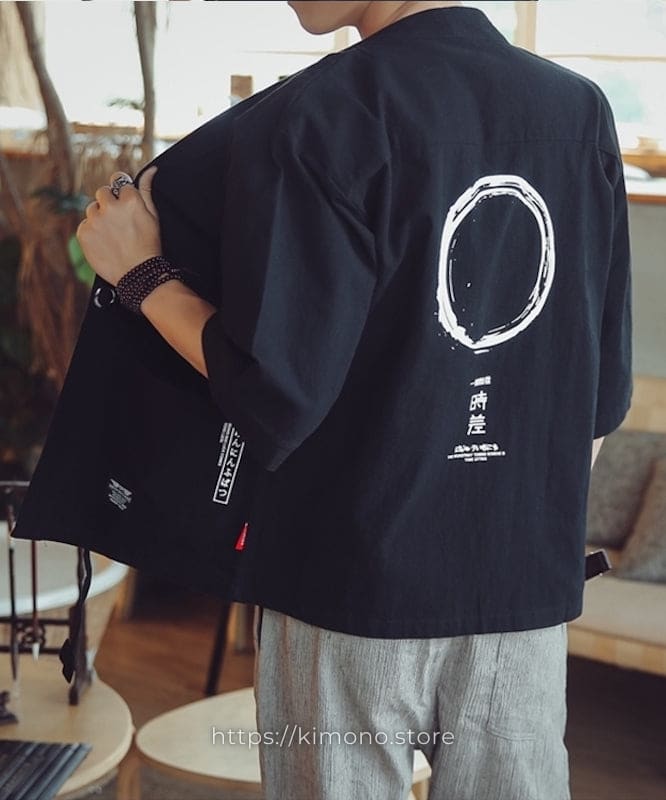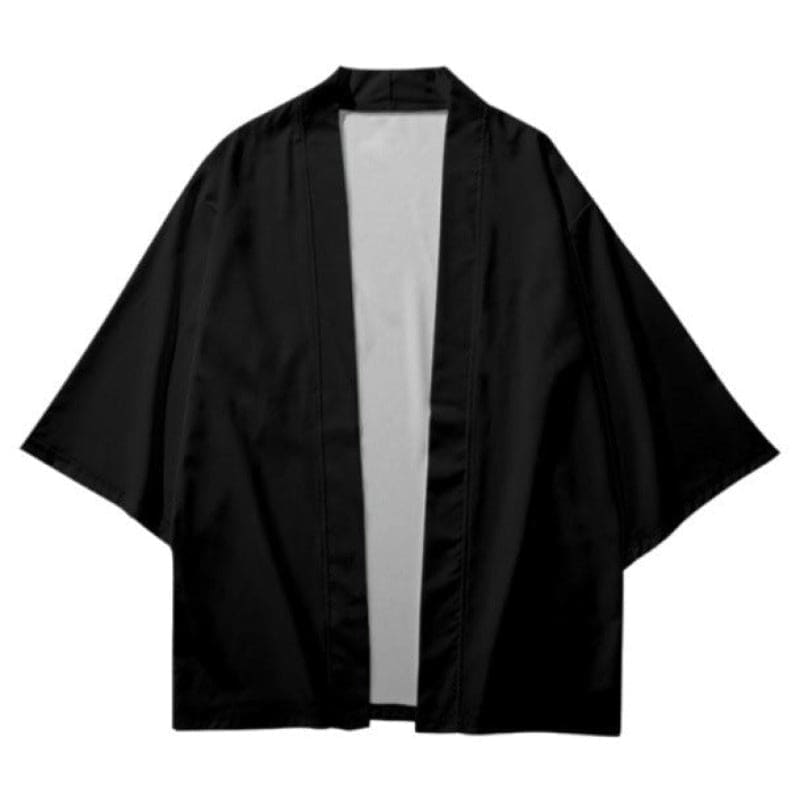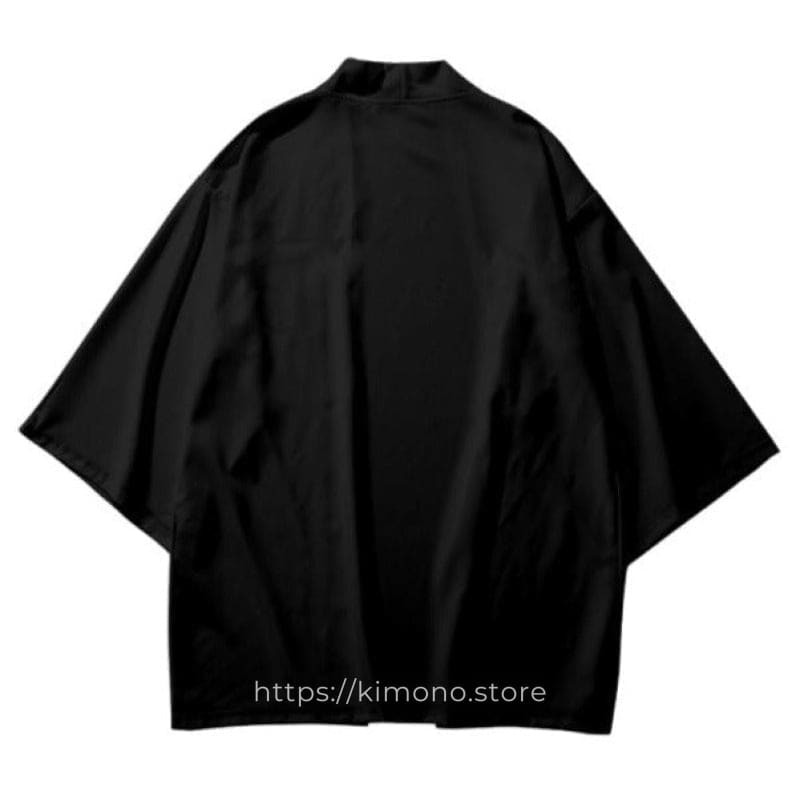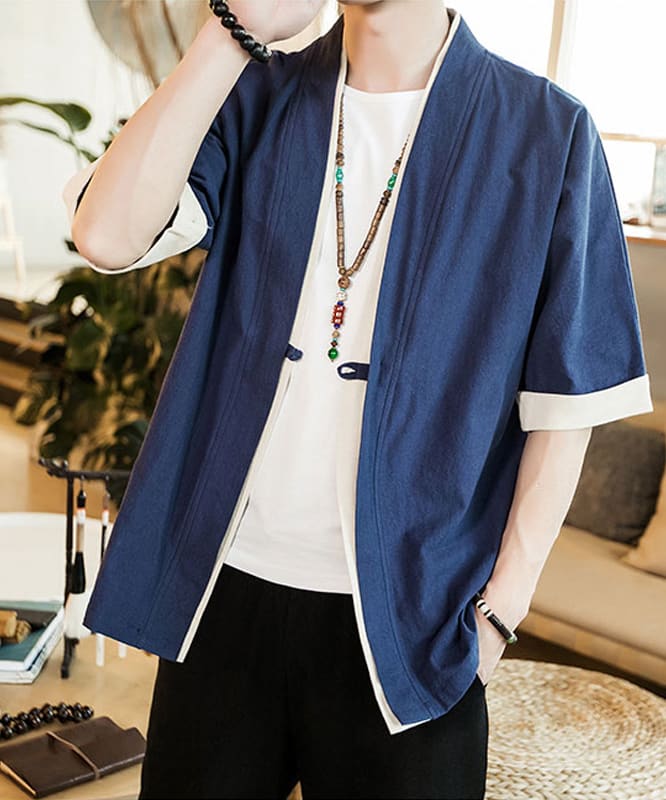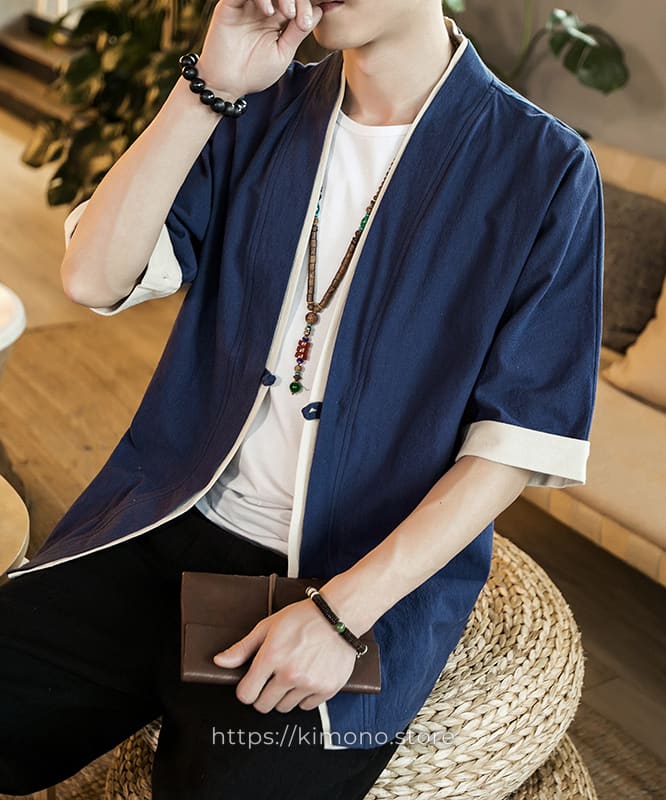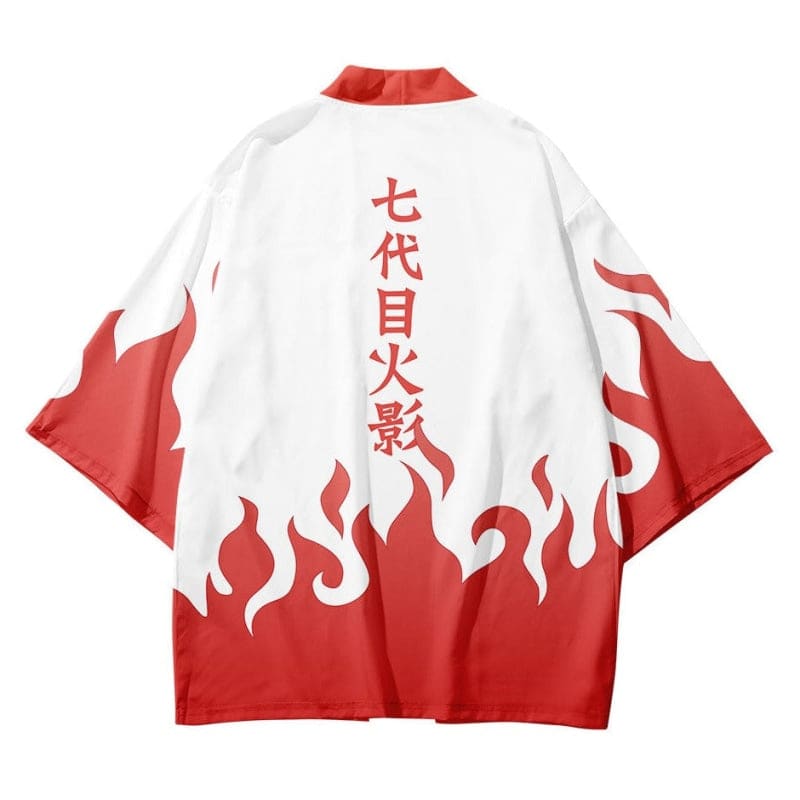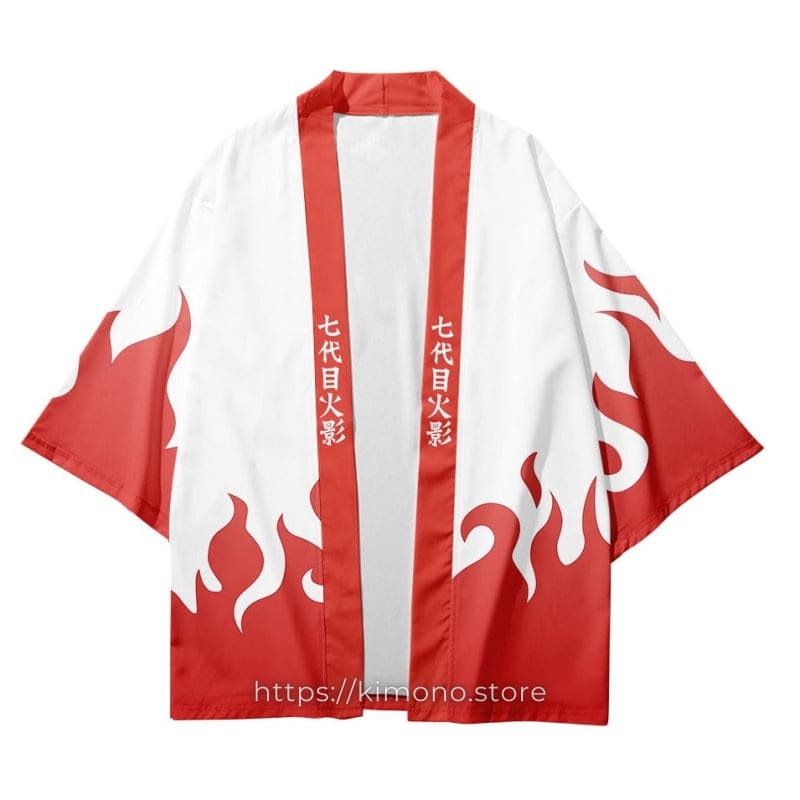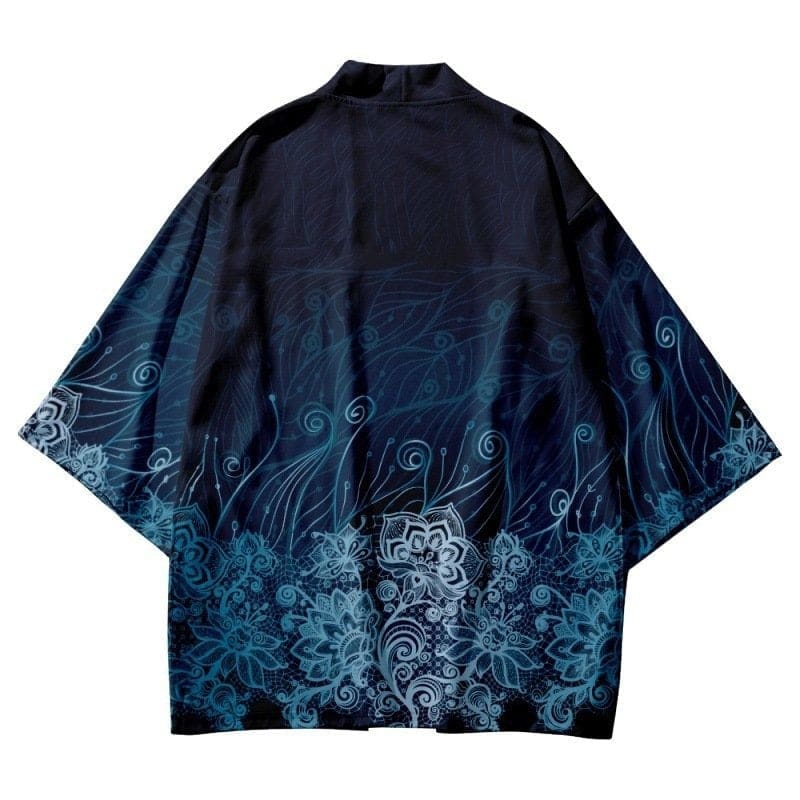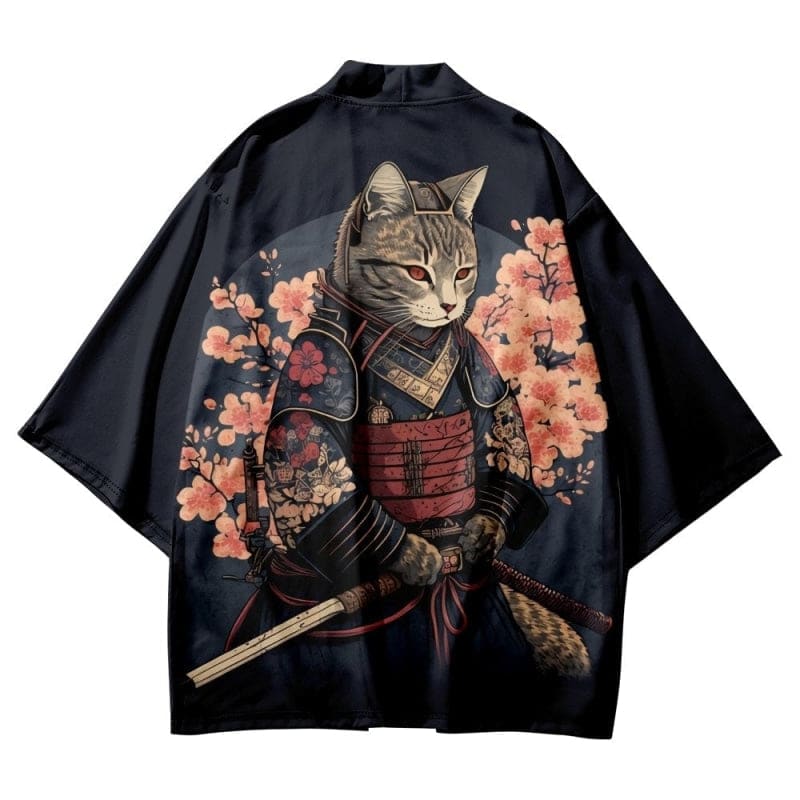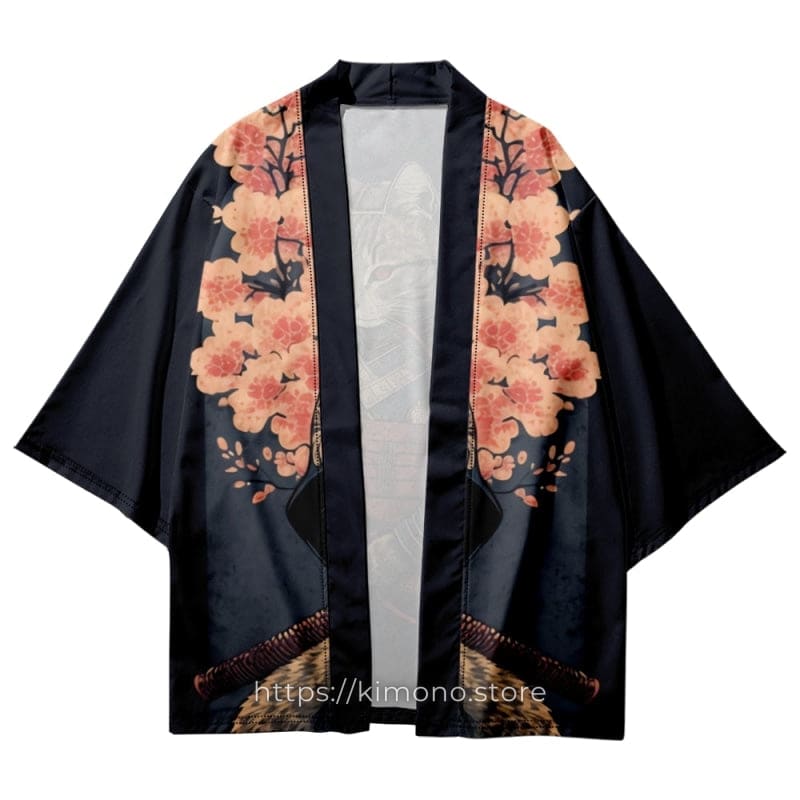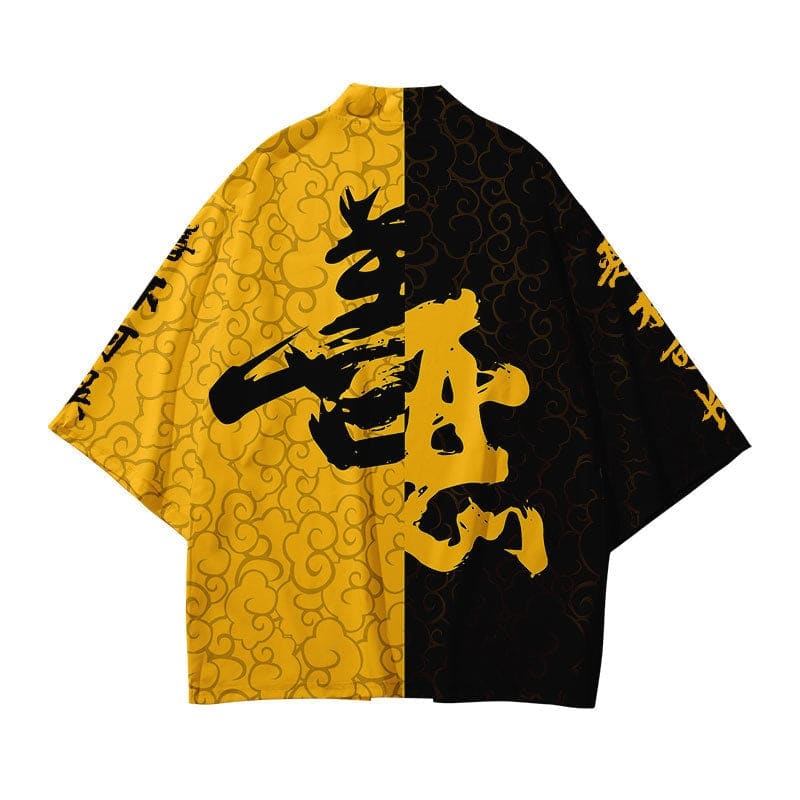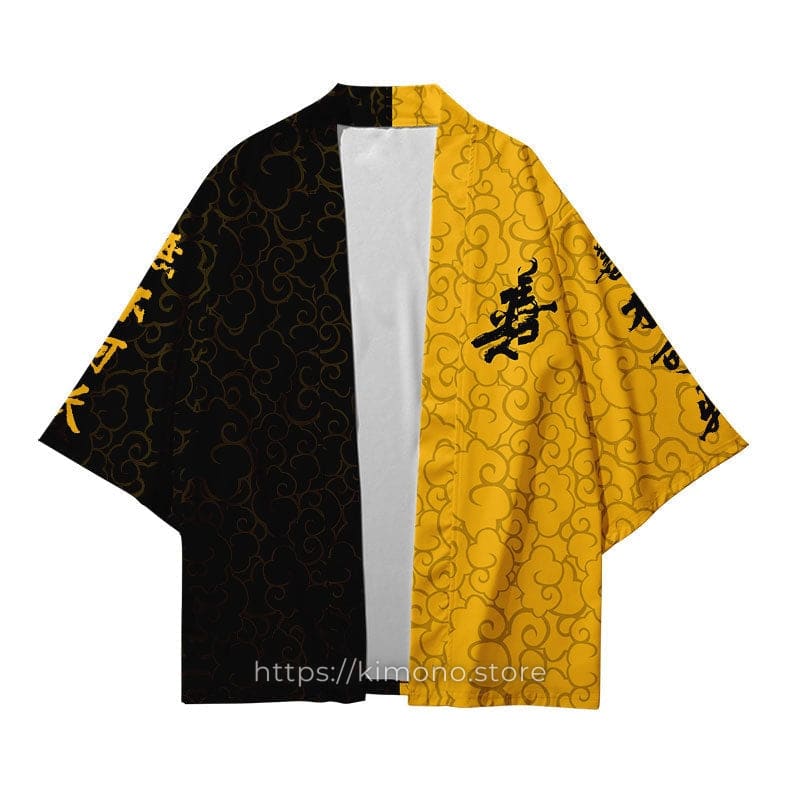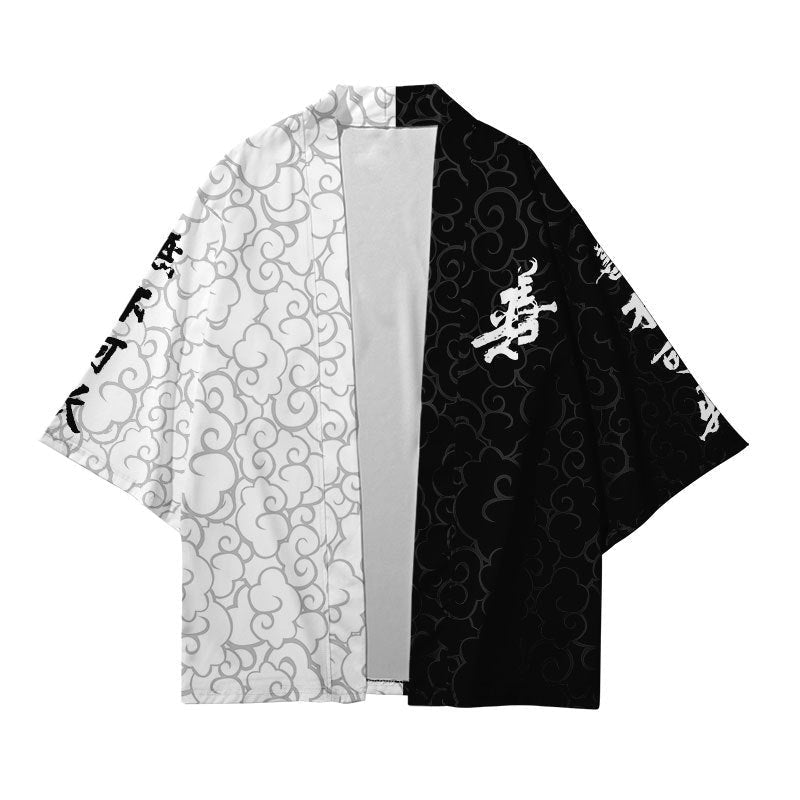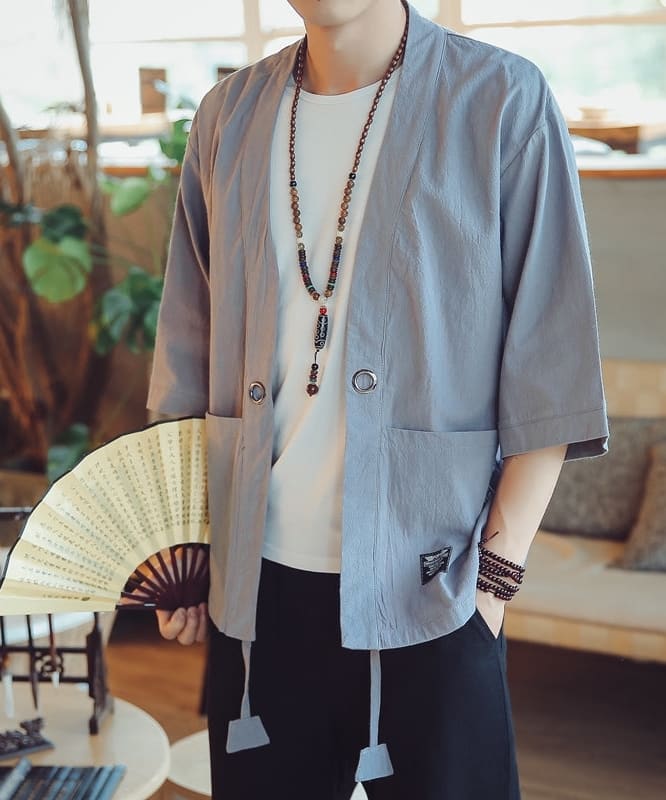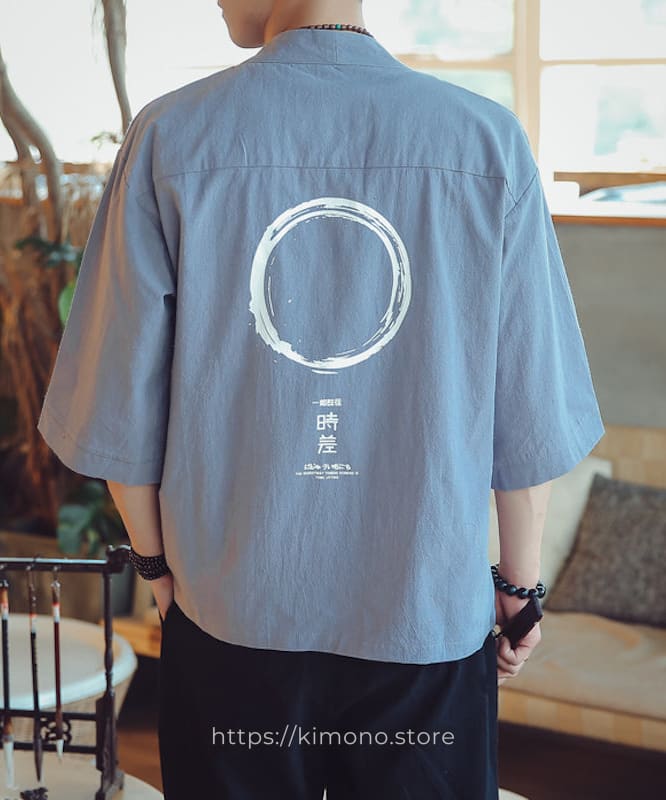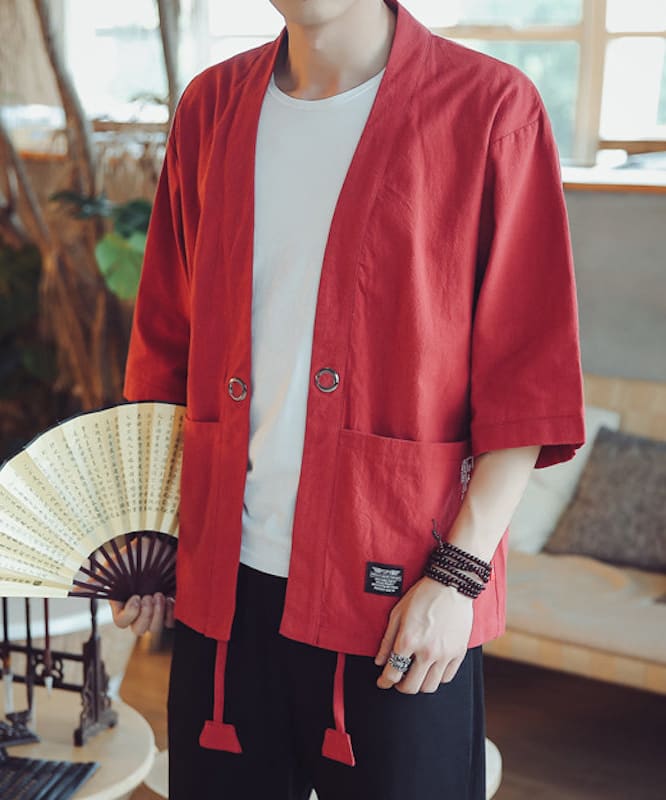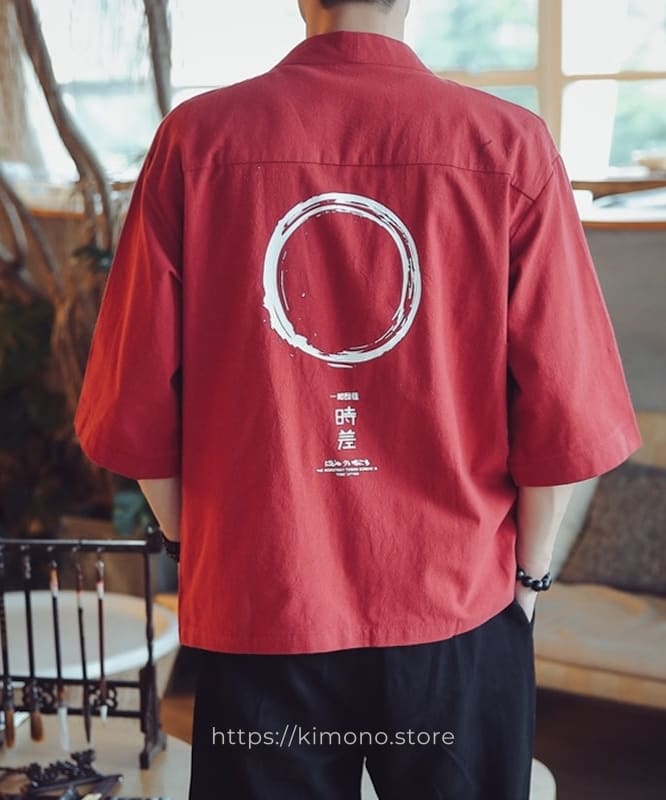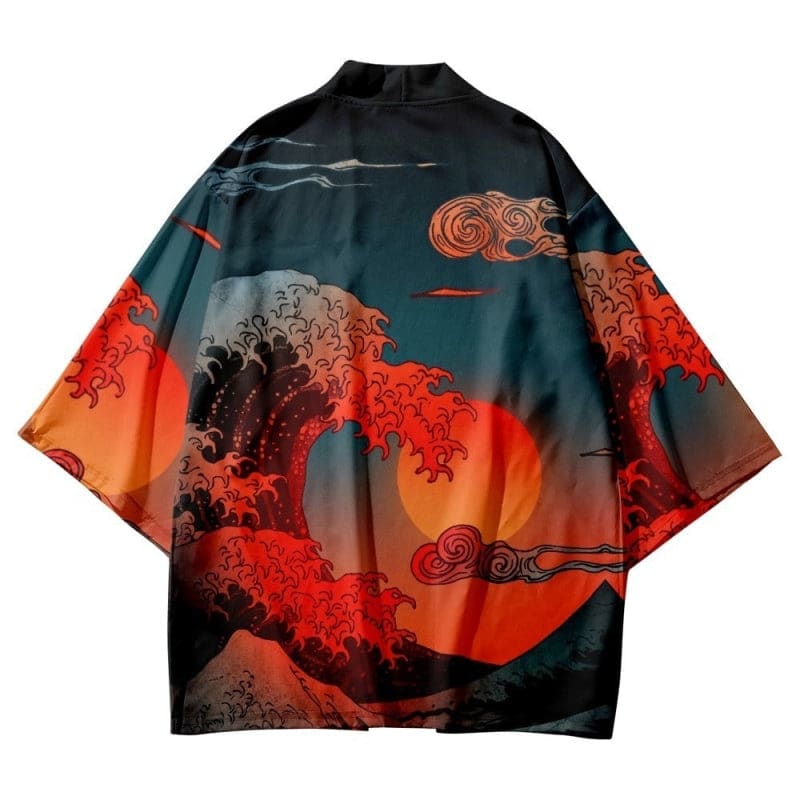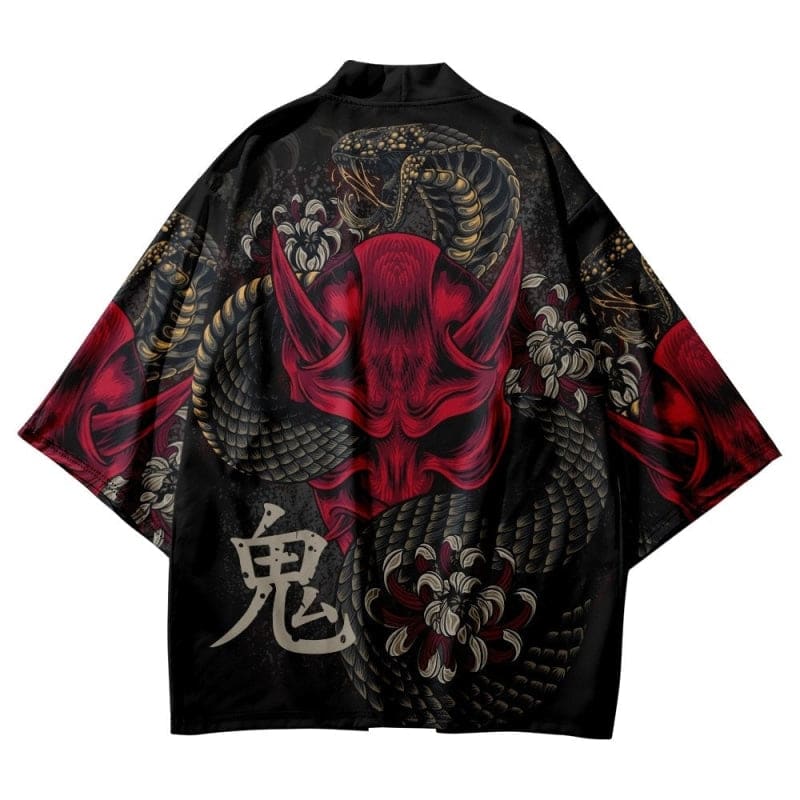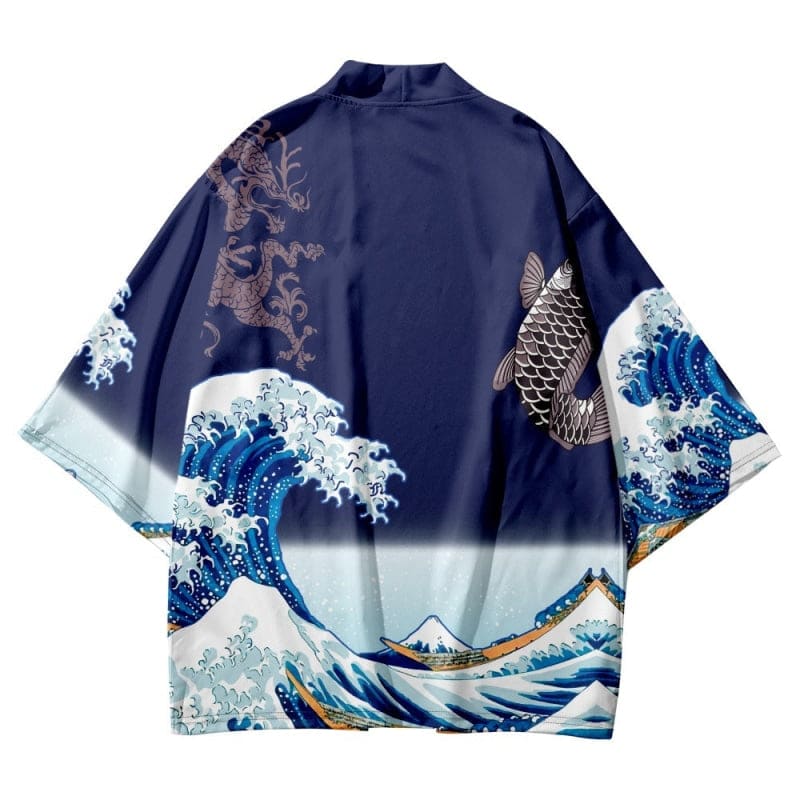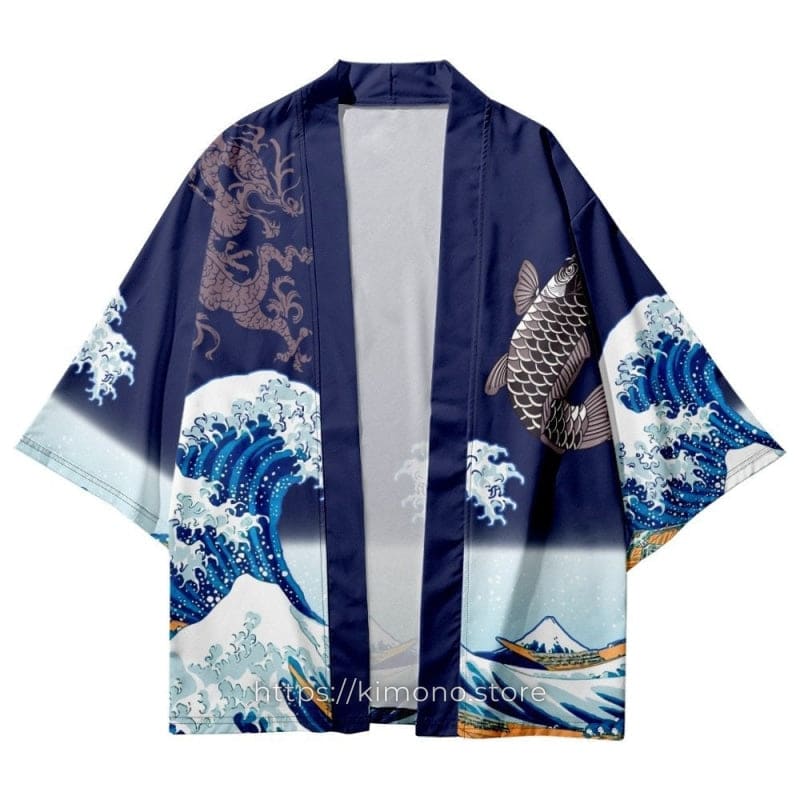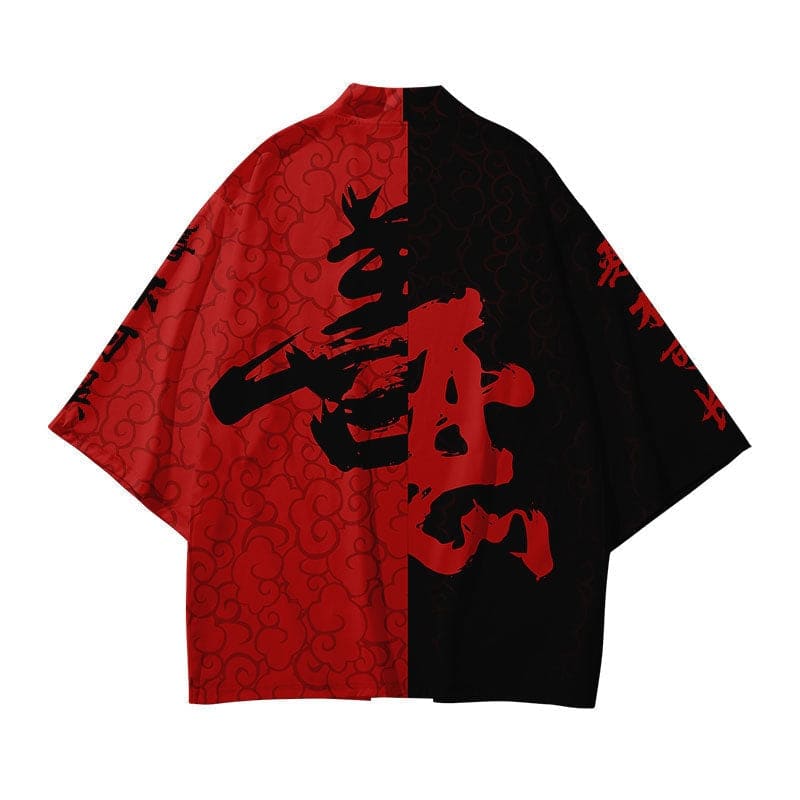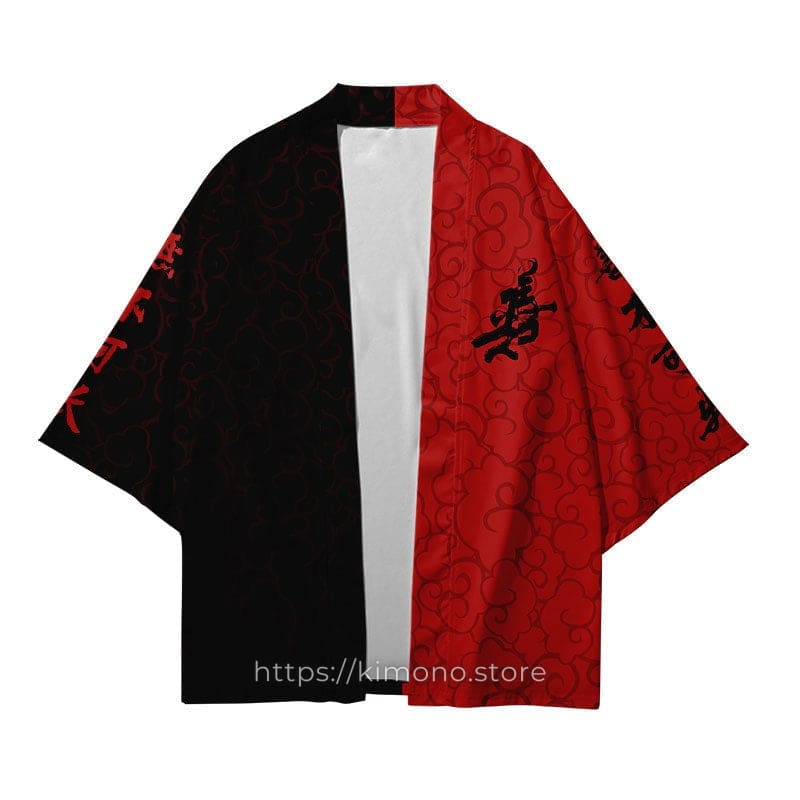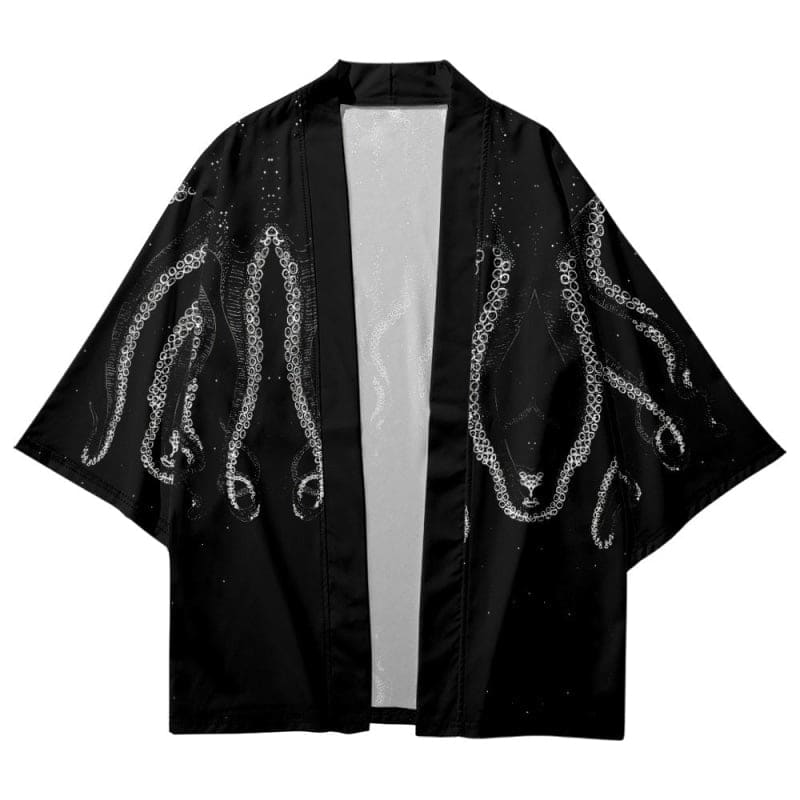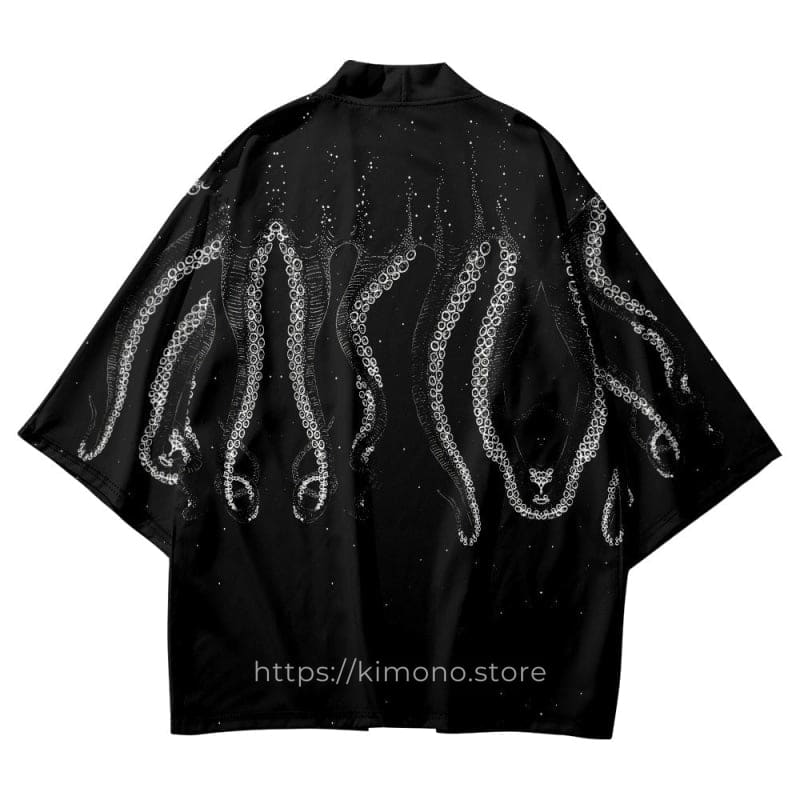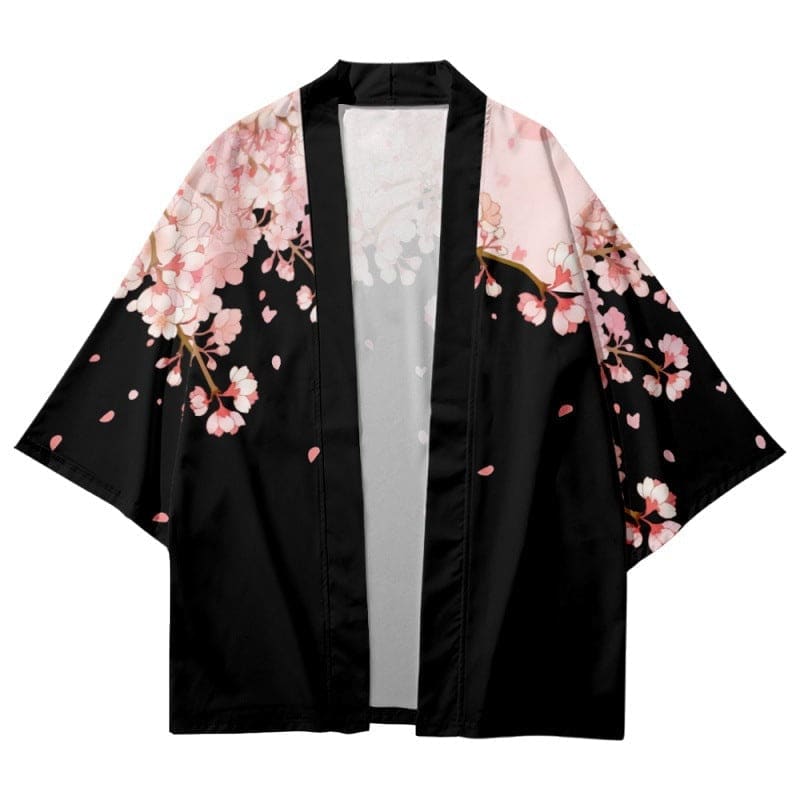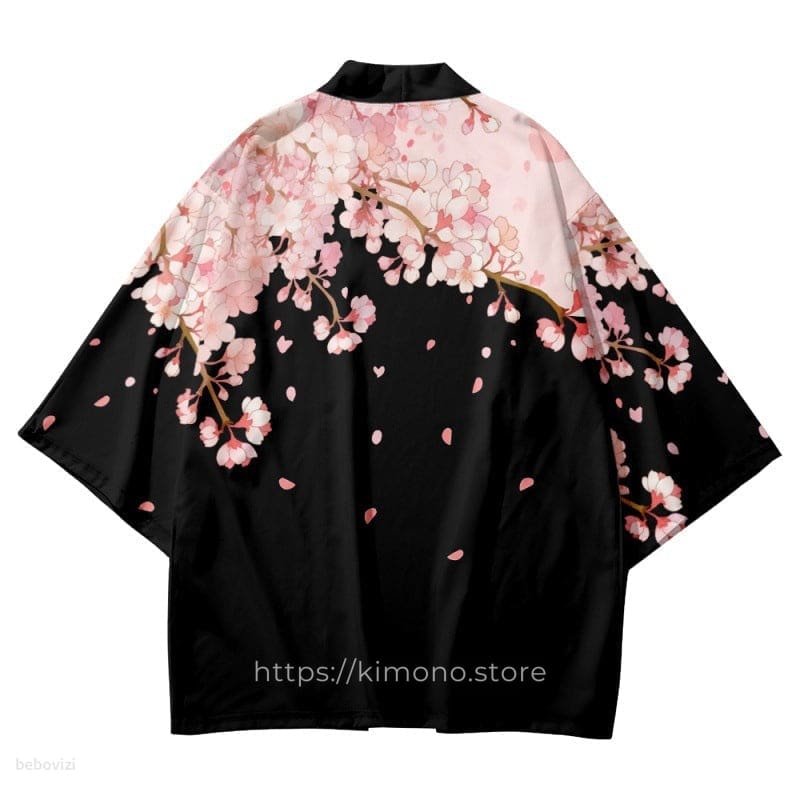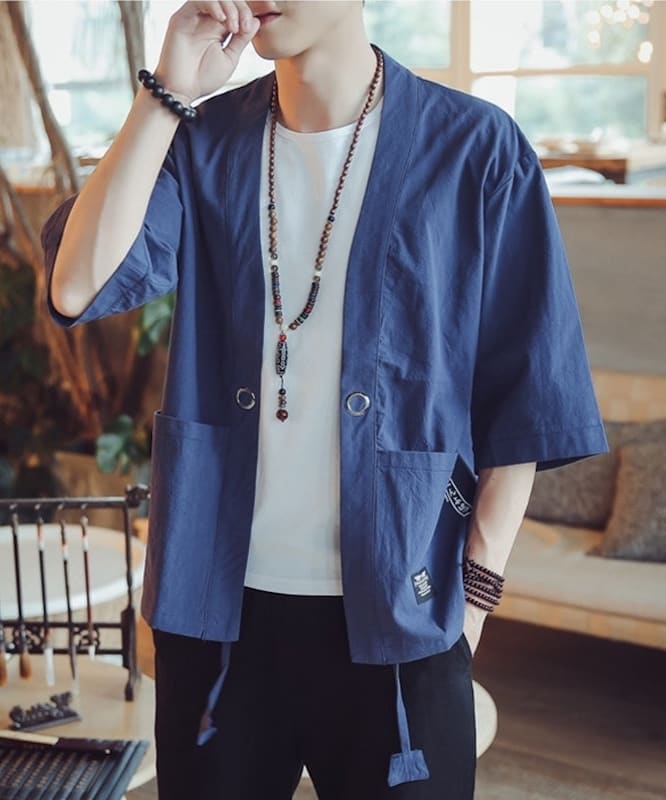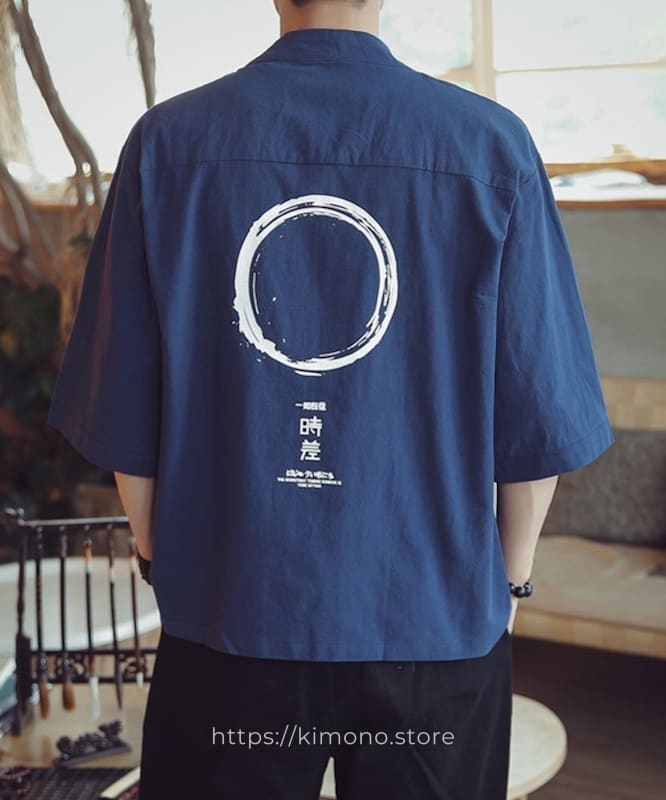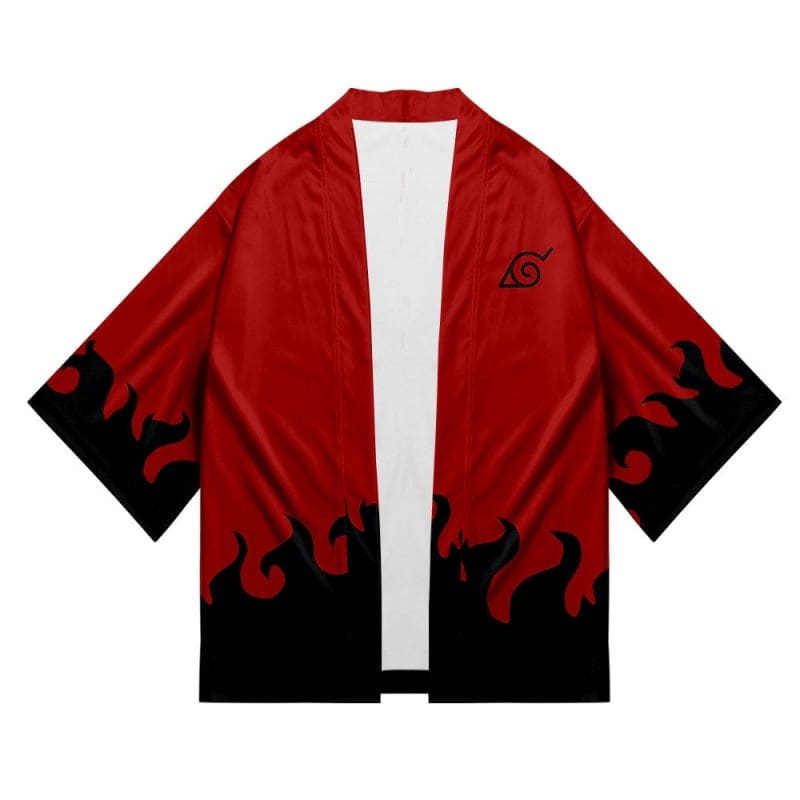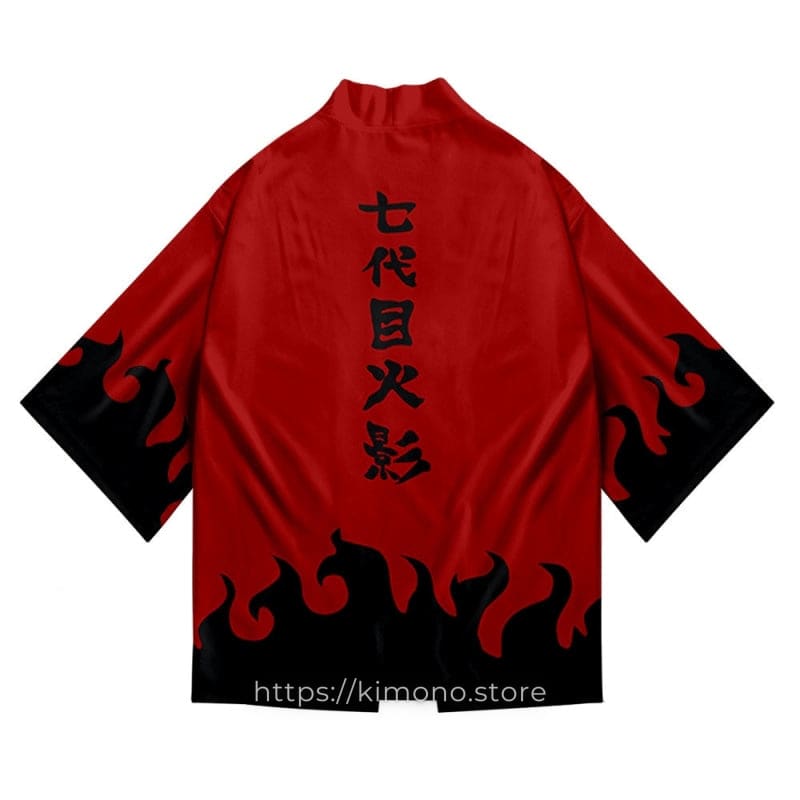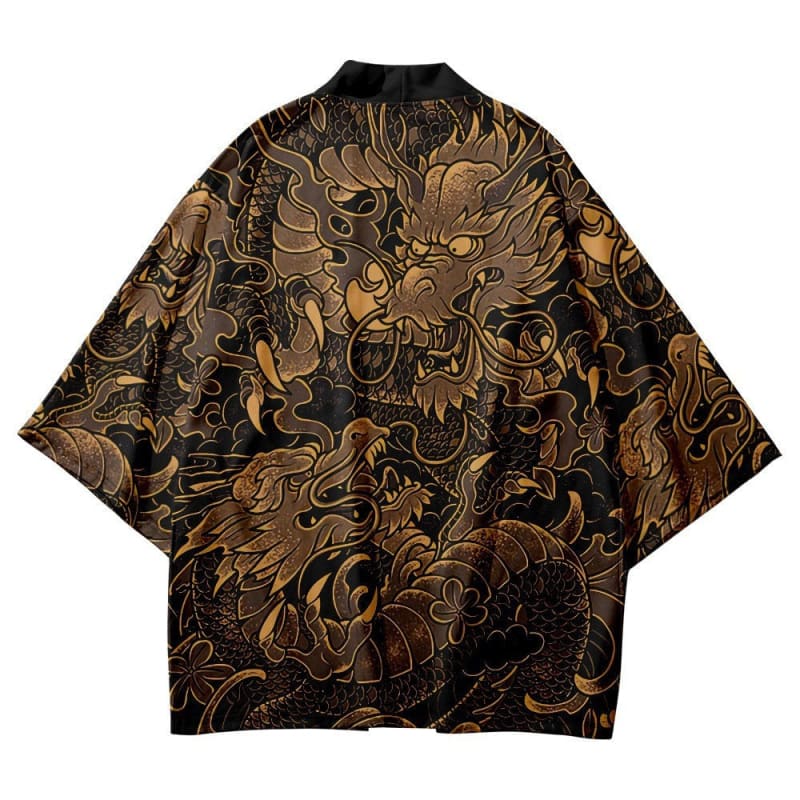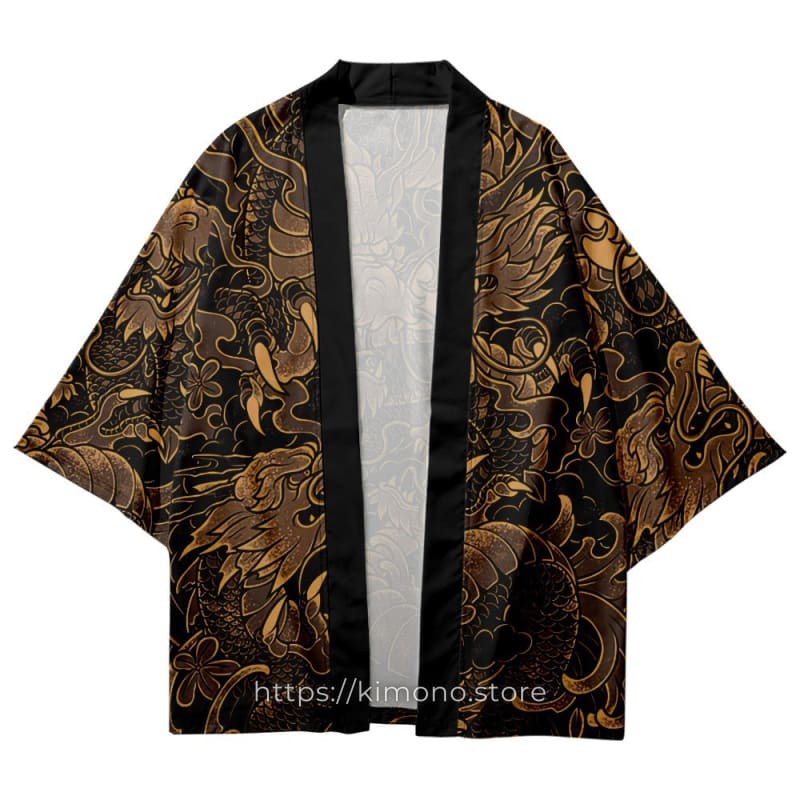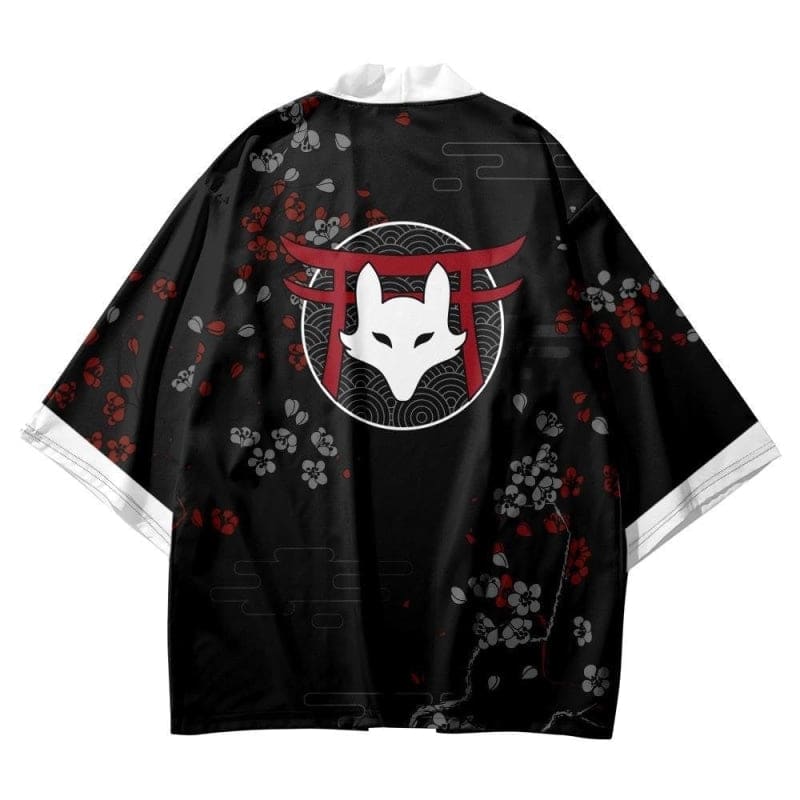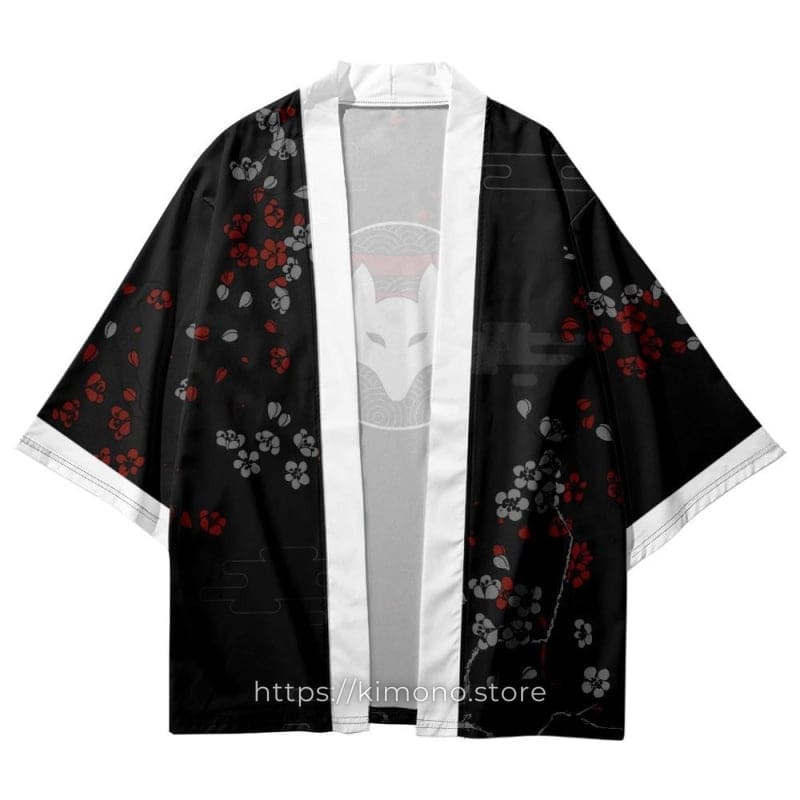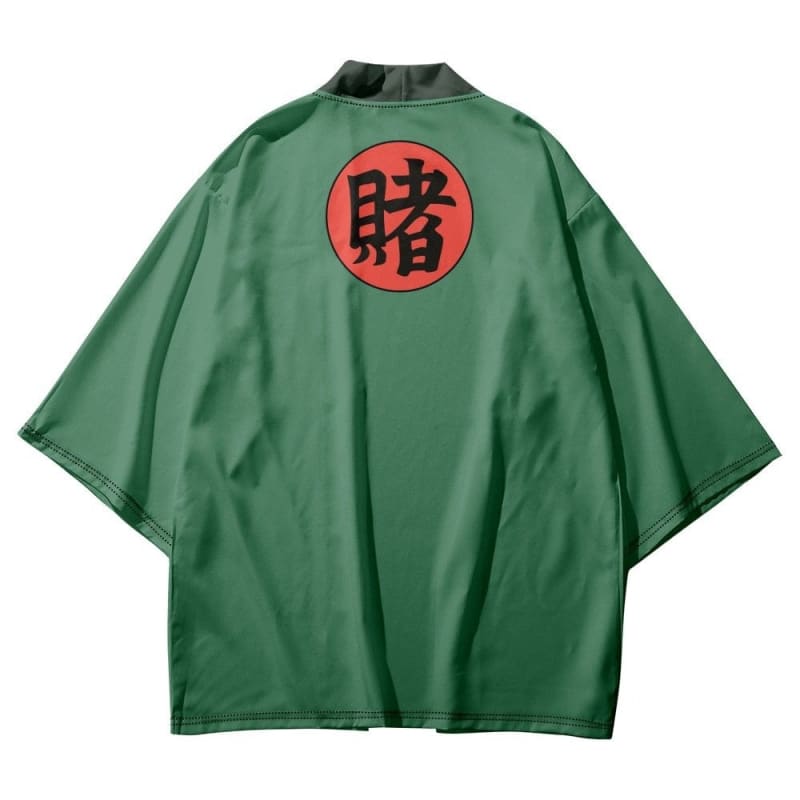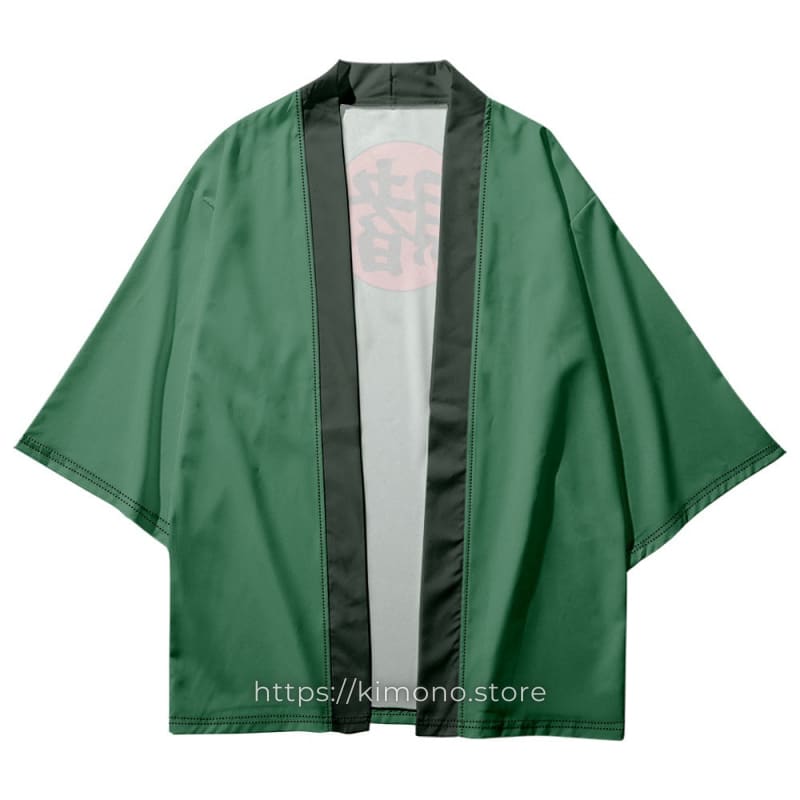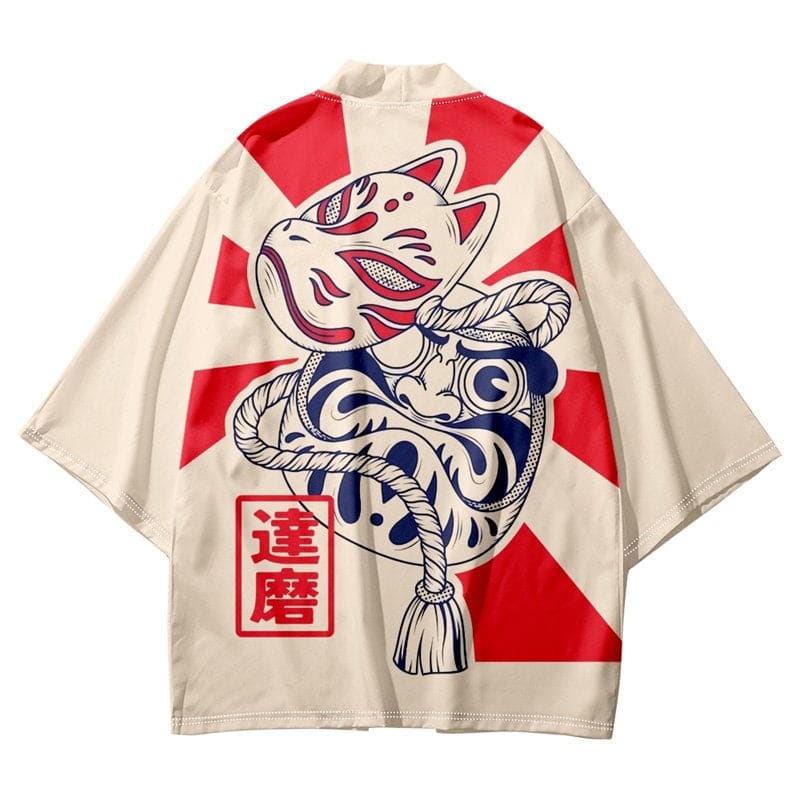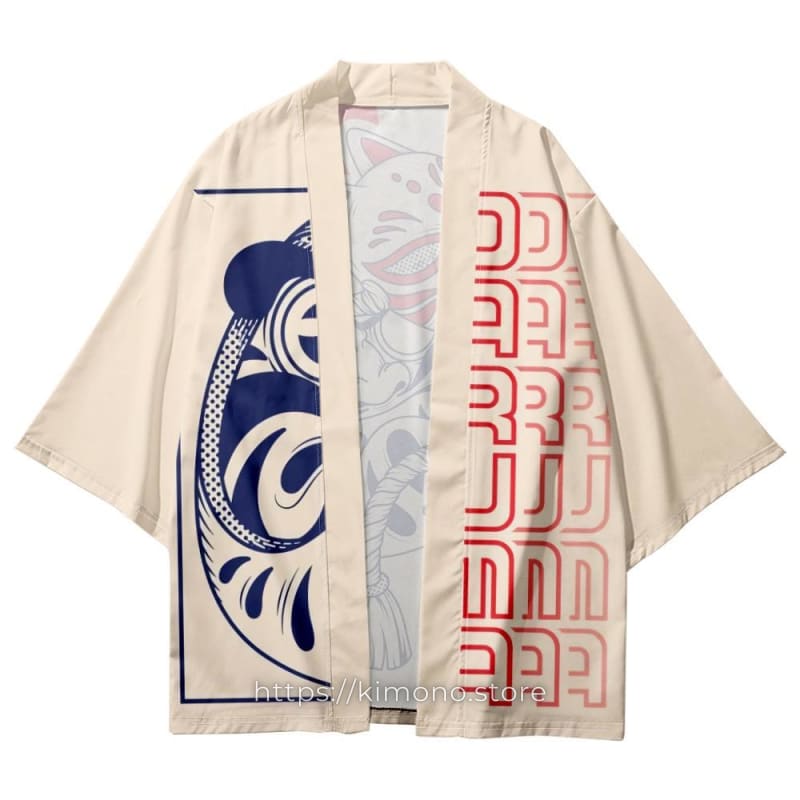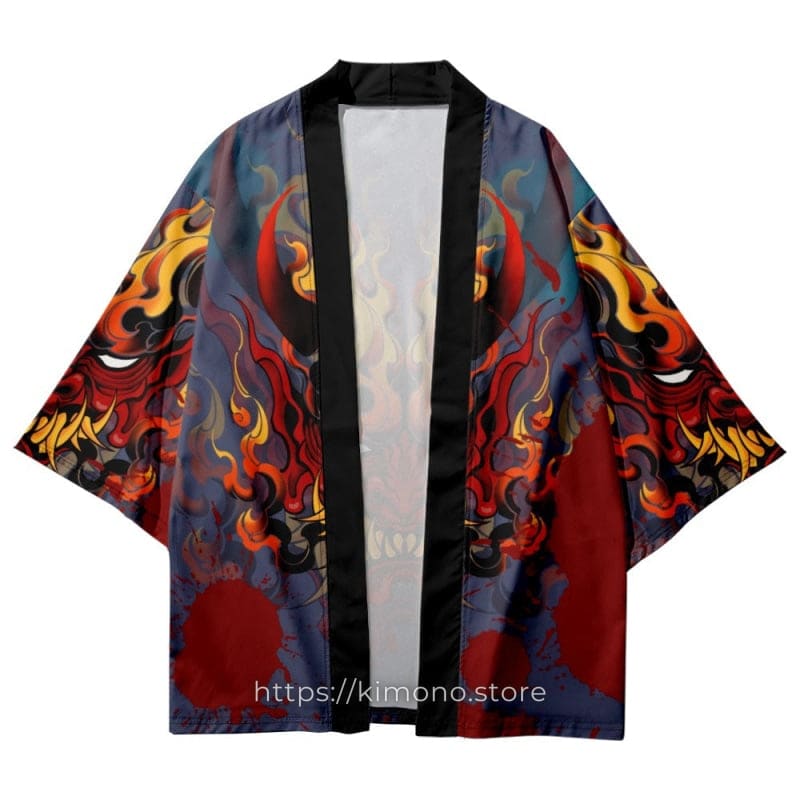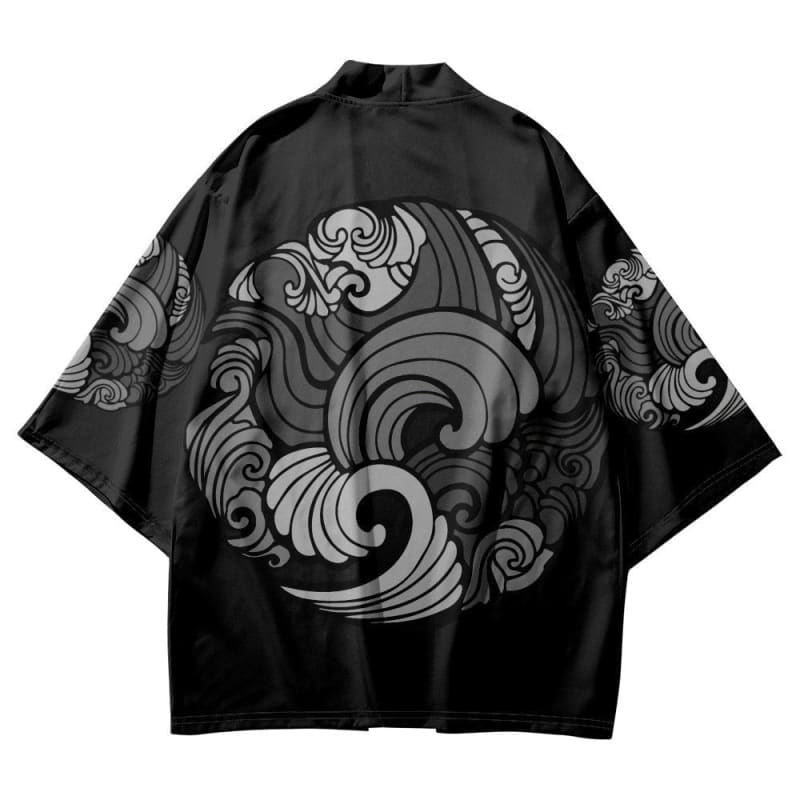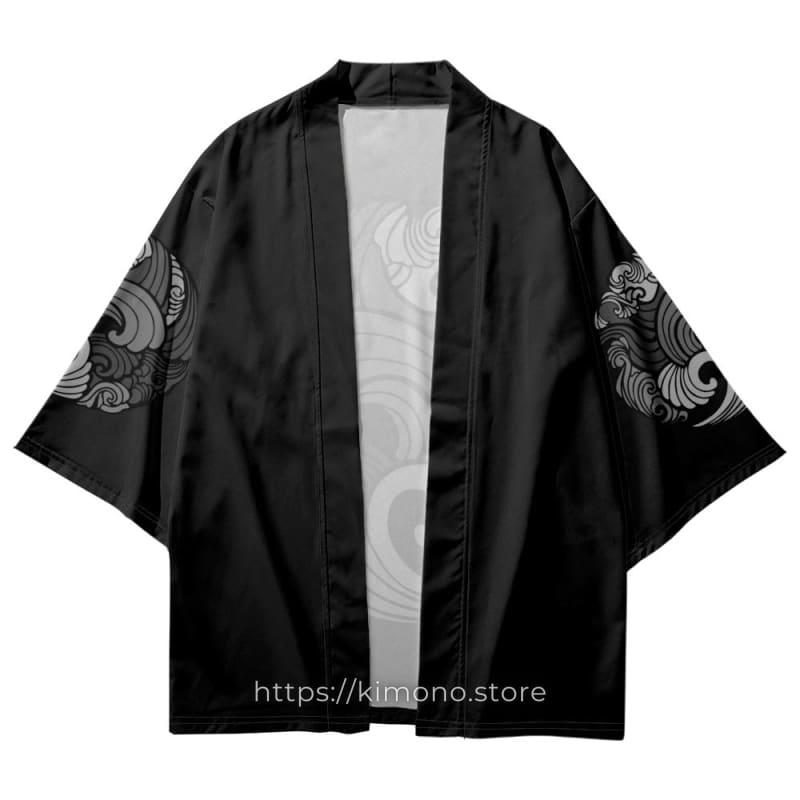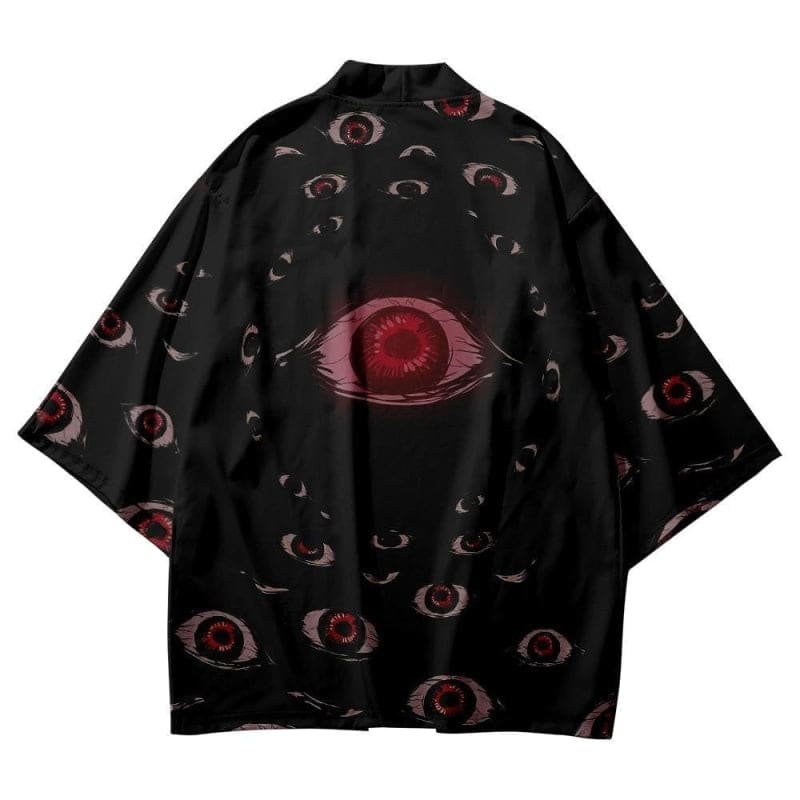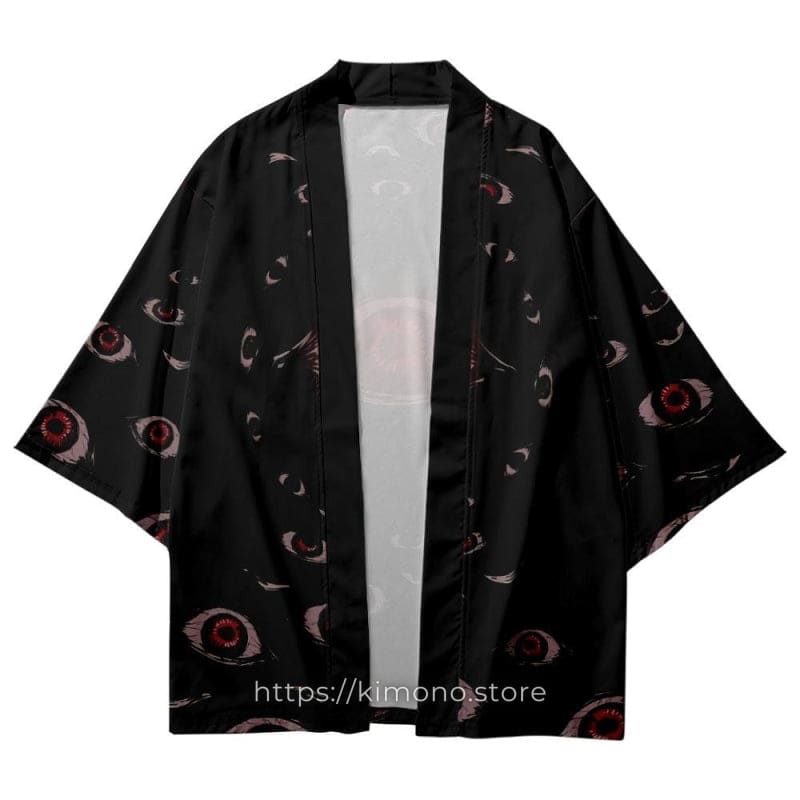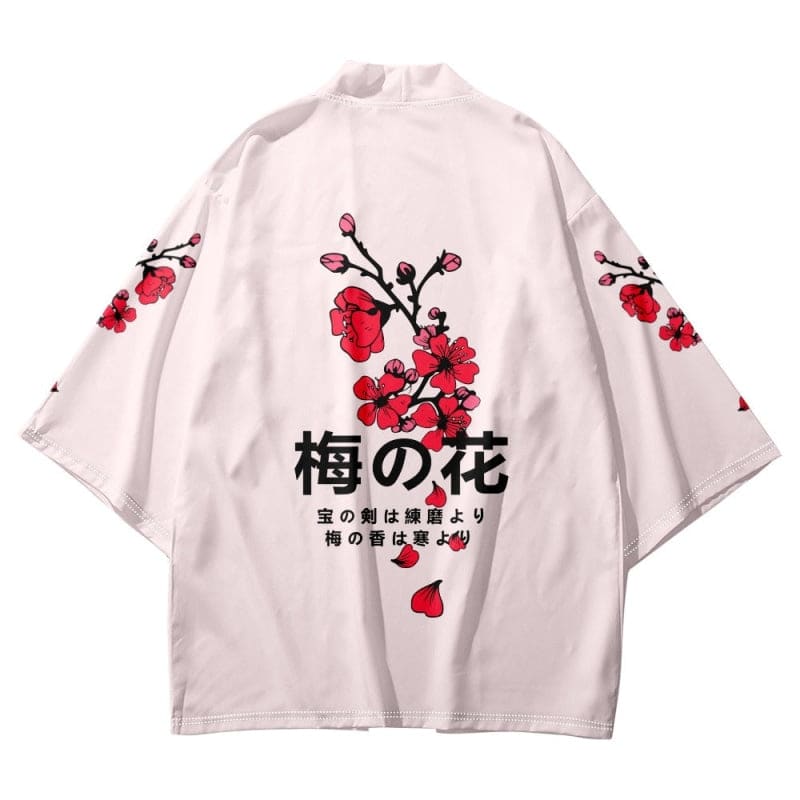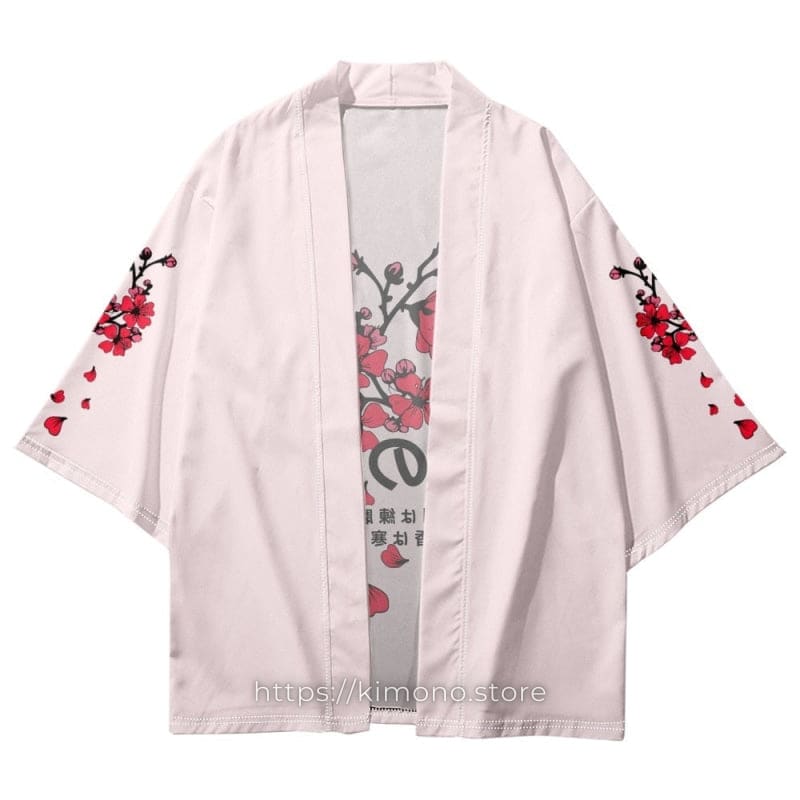Where to buy Kimonos?
Kimono Store® is the best Japanese store online to shop Japanese Clothing & all types of Modern and Traditional Kimonos for women and men such as Japanese Kimonos, Kimono Robes, Kimono Dresses, Kimono Cardigans, Kimono Jackets and Haoris!
.
A kimono (in Japanese: きもの/着物, lit. 'thing to wear') refers to the traditional Japanese dress from Japan that consists of a silk T-Shaped wrapped-front garment closed left side over right side, with wide long sleeves and worn by Japanese people on formal occasions and other important ceremonies. The Japanese Kimono is derived from the traditional Chinese Dress called Hanfu (汉服) which was first introduced in Japan during the Yamato period (300–710 CE). Before the opening of Japan to Western culture in the 20th century, the word "kimono" used to be the universal term for "clothes" as most Japanese people worn this type of garment everyday. However, in the present day, kimonos are not the everyday apparel worn in Japan anymore. As the arrival of western clothing quickly changed Japanese clothing habits with more comfortable and convenient garments to wear, it became less and less frequent to see people wear kimonos all the time. But despite the quick fall in popularity of the kimono, they are still part of the cultural landscape of Japan, thanks to Japanese important respect for tradition and history. Today, they are mostly worn by Japanese population on special occasions such as funerals, weddings, graduations, and other formal events. They are also part of the custom outfit of some professions such as Geisha and Shinto priests, as well as some athletes like the sumo wrestlers who have to wear a kimono all the time they go outside in public. And there is the Yukata, a very popular type of summer kimono made of cotton that Japanese commonly wear during the hot seasons. With the great rise in popularity of Japanese fashion in Western countries since the 1950s, the kimono quickly introduced and declined itself in several very popular variants. Here are the most common types of kimono: A kimono dress refers to any type of garment inpired by the shape of the traditional Japanese Kimono. Thus, the kimono dresses can refer to either long or short formal dresses, traditional kimono dresses from Japan, China or Korea, or simply casual attires for homewear. Kimono dresses are typically made of silk and are often brightly colored and patterned with natural designs. A haori (羽織) is the Japanese term to refer to a traditional Japanese hip- or thigh-length jacket that Japanese people wear over their kimono in Japan. Haori were originally only worn by men, but women began wearing them in the Meiji period (1868-1912). Today, both men and women can be seen wearing haori as part of traditional Japanese dress. Haori are usually made from wool, silk, or cotton fabrics, and are often decorated with elaborate patterns or designs. The most common type of haori is the uchikake, which is a ceremonial garment worn by brides on their wedding day A kimono jacket, also referred to as kimono shirt or kimono top, is a modern version of the traditional Japanese haori that has been adapted for wear in the West. Kimono Jackets are T-Shape tops with short wide sleeves and typically made of silk. They also feature a wide range of colors and patterns. The kimono jacket originated in Japan, where it was originally worn over a Kimono or a Yukata. Kimono jackets can be worn by both men and women, and are often seen as part of a formal outfit. Yukata (浴衣) are kimonos made of cotton, which in turn is divided into two types: a more elaborate one, used for festivals and typical parties, and a simpler one (called nemaki), which the Japanese used to wear to sleep. The furisode (振袖, lit. 'swinging sleeve') (黒留袖, lit. 'black short-sleeve')is the most formal kimono worn by young women, particularly single women. It is characterized by very colorful and exuberant motifs and long sleeves, which generally reach the ankles. These characteristics are to attract potential suitors. Uses: Wedding ceremonies (only for young, unmarried women), for the first tea ceremony of the year, high school graduation, etc. The kurotomesode (黒留袖, lit. 'black short-sleeve') is the most formal kimono for married or engaged women. The pattern of these kimonos follows more conservative rules. Therefore, the colors are more sober and the sleeves are shorter (between 55 and 70 centimeters). It is black on the bottom and has magnificent motifs on the lower part placed asymmetrically, with the most important part concentrated on the left. The older the woman is, the smaller the motif is and the more it is placed towards the bottom. In the case of a younger woman, the larger the motif and the brighter the colors that compose it. It is the most formal and therefore has five shields (mon or kamon) printed on it, four on the top of the sleeves and one on the back. The matching accessories must always be gold or silver colored. Uses: wedding ceremony and ceremony reception. It can only be worn by the closest relatives of the bride and groom (married mothers and sisters). The rest of the married guests, according to the etiquette, would wear an irotomesode with five mon. The Irotomesode (色留袖, lit. 'colour short-sleeve') is a type of Kimono that has a background color, and like the kurotomesode, the motifs are on the bottom. In Japan, the irotomesode can also be worn by single women. Depending on the number of mon (shields), the formality of the kimono is decided. It can have five, three, one or no shields. An irotomesode can be replaced by a hōmongi in a formal ceremony. An irotomesode with a shield is more formal than wearing a hōmongi. In the case of a wedding ceremony, the guests who would wear this kimono would be married but not directly related to the bride and groom (mothers and sisters). Therefore, both female friends and other relatives should wear it on such an occasion. Matching it with silver or gold obi and zouri, as required by etiquette. Uses: Wedding ceremony and formal ceremony. The uchikake (打ち掛け) is a part of the bridal costume. It is a long-sleeved kimono richly adorned with brightly colored embroidery and motifs usually of cranes, pine trees, flowing water and flowers. It is made from the finest silk, and the lower part is padded to give it more volume. It is worn over the shiromuku as a cape and without obi. The term shiromuku (白無垢, lit. 'white pure-innocence') is used to refer to all-white uchikake. It literally means "pure white". Originally worn by noblewomen for formal occasions, it is now an essential component of Japanese bridal attire. Kakeshita is a single color furisode. Like the uchikake, it has a padded hem. Uses: during the ceremony. Another layer of kimono that is worn under the kakeshita and is a little shorter than the others. Uses: wedding ceremony and ceremony reception. It is a wedding furisode worn by the bride after the ceremony. It has long sleeves and brightly colored patterns all over the kimono. Uses: after the wedding ceremony (banquet, etc.). Mofuku (喪服) is the traditional Japanese kimono worn when expressing sadness, for example, at funerals or Hōji (Buddhist memorial service). It is worn by women of any marital status. It is totally black without any ornamentation, except for the family crest (the mofuku carries five crests). Uses: burial or Buddhist memorial service. Houmongi (訪問着, lit. 'visiting wear') literally means visiting kimono and can be worn by both single and married women on semi-formal occasions (visits or parties). It can be of any color and the asymmetrical patterns are dyed around the body without breaking at the seams. It is less formal than the previous ones and usually differs the outer material with the inner material (lining). The length of the sleeves varies according to marital status. A Iromuji (色無地, lit. 'solid colour') is made of a single color. It can incorporate motifs of the same tone (as can be seen in the detail). It can be worn on semi-formal occasions and is ideal for the tea ceremony. By incorporating a shield on the back of the back, it becomes a more formal attire. A piece that can be worn regardless of age or marital status. It is made of silk crepe or tsumugi. Tsukesage (付け下げ) are kimonos that do not carry any sigil. They are low-ranking women's formalwear. Embroidery, dyeing and weaving come from the shoulder on the left hand, as well as on the right hand and back. The komon (小紋, lit. 'small pattern', though the patterns may in fact be large) is a kimono for everyday wear, so it is the most casual. Delicate small patterns are regularly distributed decorating the fabric, which is dyed using stencils. Uses: for shopping, a casual lunch, daily wear, etc. Edo-komon (江戸小紋) is a type of komon characterized by small dots arranged to form larger motifs. It is the only komon that can carry shields. When looking at a kimono of this type from a distance, it will appear to be of a solid color, so it is equivalent in formality to an iromuji and can be worn on the same occasions. This technique originated and spread during the Edo period, when the samurai class was the dominant (no shield, mon) tea ceremony (it has the same formality as an iromuji). The first origins of the kimono dates back to Japan, in the 7th century while Japan is under Chinese influence. At that time, it is called kosode, it is an undergarment that is worn with pants, a long skirt or a large jacket. In the high aristocracy, the kimono is worn under layers of clothes (up to 12!) which are superimposed and sewn together every morning. In the 8th century, during the Nara period, the dress codes are redefined and the kimono indicates who one is and what place the individual occupies within the society. The Heian period (794 - 1185) is marked by the diplomatic rupture between Japan and China. During this period, kimonos were colored and adorned, they came back into fashion and were remarkable for their finesse. They change according to the seasons, the occasion, the social rank of the person or his age. There is also a differentiation between kimonos for men and those for women. From now on, the kimono is "externalized", it is covered with woven and sumptuous patterns. In the 14th century, during the Muromachi period (1392 - 1573), the kimono was worn over other clothes. It is thicker and thicker to protect from the cold. It is the dress that high society women wear during official ceremonies. In respect to the tradition, single women wear a short-sleeved kimono, and the sleeves are lengthened after the wedding. The mother of the bride wears a black kimono with patterns below the waist for the wedding. In the Edo period between 1600 and 1868 the kimono is the traditional Japanese dress par excellence. It is now worn by everyone, men and women whatever their age, condition or morphology. Great fashion houses opened in Kyoto and in the rest of the Empire. Peace was relative, merchants became rich and ordered kimonos as resplendent as those of the nobility. Women put on extravagant outfits in terms of embroidery, dyeing and weaving. The decorations on the bottom of the garment are colorful, and there are also beautiful patterns on the collar. The center of the kimono however is not very decorated because it is hidden by the belt. Between 1750 and 1850, that is to say in the second half of the Edo Era, the kimono is simplified, it gradually loses its stylistic extravagance. The ornaments and patterns are simplified, and the kimono now displays geometric patterns. The colors are more neutral. We find more and more yukata, cotton kimonos. During the Meiji era, between 1867 and 1912, the Western influence and the opening of Japan put at risk the tradition of wearing the traditional kimono. The kimono was transformed to satisfy Western tastes and the cultures merged to create clothes with more abstract lines and patterns. Finally, at the beginning of the 20th century, it is the Shôwa Era. The kimono is only worn for special occasions. Japanese people who do not necessarily have the means nor the desire to invest fortunes in this festive dress rent some for special occasions. Nowadays, the kimono can be found in different forms and especially in fashion. The design of the kimono consists of several steps: The fabric can be plain or have colored patterns, the fibers used can be all the same size or be worked in order to give relief to the final rendering. We weave rolls of several meters, always 35 cm wide. The rectangular pieces are then assembled to make the kimono. First, the predominant color is defined, then comes the details. The fabric is steamed with natural powder so that the fabric gets the desired color. Shapes are added with a tracing technique and the fabric is embellished with details and embellishments with brushes. Then the fabric is dried before adding embellishments, such as embroidery, thread or gold leaf. This step can take up to four weeks depending on the complexity of the design. Finally, the pieces are assembled together, left side front and back, right side, sleeves, collar and okumi, a piece placed at the front under the collar. Online or in various shops in Japan, you can buy authentic Japanese kimonos between $50 to $1000 or more, depending on the material they are made out of, the pattern, and the person who designed the garment. Price for a custom made kimonos designed by tailors can go up to $30'000. To wear a women's kimono you will need several items of clothing and accessories. Some are necessary, some are optional. Here is what we consider essential to properly wear a kimono, from the inner layers to the visible elements. These are worn over your regular underwear. It may be better to wear a kimono or sports bra, which flattens the chest. These are the first kimono specific clothes. The susoyoke (裾除け) is a kind of petticoat. Some women prefer to opt for a long johns which can be more comfortable to wear, especially when it is hot. The hadajuban (肌襦袢) looks like a camisole. The nagajuban (長襦袢) is a very thin silk dress, slightly shorter than the kimono, so that the sleeves and hem of the nagajuban remain hidden under the kimono. Only a part of the collar of the nagajuban will be visible. You can sew your own collar if you want it to have a particular color or pattern, any 90x15cm strip of fabric will do. In addition to the nagajuban you should also buy an erishin, a small plastic strip that is placed under the collar to give it a neat look. Koshi-himo (腰ひも) are thin cotton belts that are used to close and hold the nagajuban and kimono in place. You will need at least two, maybe three, but they are very simple and cheap belts. There is a more specific accessory, a kind of elastic belt with clips, called korin, which can replace the third koshi-himo to keep the neck of the kimono in place. The date-jime (伊達締め) is a wider belt that holds the nagajuban and helps hold the kimono in place before putting on the obi. It helps shape a cylindrical silhouette, the body shape that best suits the kimono. You will need two: one for the nagajuban and one for the kimono. The obi is a very large and wide belt that is tied on the outside of the kimono. There are many different styles of obi, made from different types of fabrics. The Maru obi and the Fukuro obi are the most formal, featuring gold or silver patterns and elaborate embroidery. The Nagoya obi was designed to be more practical: the ends, partly sewn together, make it easier to tie. The Hanhaba obi is half the width of a regular obi, is usually worn with a yukata or a more casual kimono and does not require any additional accessories to be tied. Tying the obi can be incredibly complicated or simple enough that a novice can do it on the first try. It all depends on the type of knot you choose to tie, as there are an infinite number of them. In our next article, Sheila and Nichole teach you how to tie a hanhaba obi. The kimono (着物) is the garment itself. It can be made of silk, linen, cotton, wool, or polyester. There are many types of kimono. The easiest to recognize is the furisode (振袖), whose sleeves are so long that they almost touch the ground.The furisode is worn by single women and is sometimes also associated with maiko, young women studying to become geisha. The furisode's long sleeves don't make it particularly practical to wear, so Nichole chose a lovely komon (小紋) kimono, pink and blue, perfect for a walk around town. Tabi (足袋) are socks that separate the big toe from the others so they can be worn with traditional Japanese shoes, and go all the way up to the ankles. Traditional tabi are white, but nowadays you can find tabi in various colors and patterns that can match your kimono. Zori (草履) and geta (下駄) are traditional Japanese shoes. Zori are flatter, and the modern versions, made from synthetic materials, come in an endless array of colors and patterns. Zori are considered more formal shoes than geta. Geta are made of wood and make a typical "clip-clop" sound when walking. Some are rectangular, others are cut more elegantly to fit the shape of the foot. Dressing in a kimono may take a little practice, but following these five steps will help you learn how to put on a kimono on your own. You must be in your underwear before beginning these steps; we recommend a sports bra and panties. We often neglect this first step, but putting on the tabi socks once you are dressed in kimono can be tricky. At best you might move some elements of the kimono while bending down to put on the socks! Put on the susoyoke first (or long johns if that suits you better), then the hadajuban. Make sure the hadajuban is centered on your torso, then pull the back hem down to expose your neck. Do not tuck the hadajuban inside the susoyoke or long johns. To keep the collar stiff and not wrinkle, you will need an erishin that you will pass behind the collar. If you don't have an erishin, you can use washi paper that you roll and flatten before pushing it inside the collar. Center the nagajuban on your body, leaving a space the size of your fist between the collar and your neck. Use a koshi-himo to hold the nagajuban in place. You will need to tie the belt just below your chest. Then take a date-jime and tie it over the koshi-himo. Pull the side seams of the nagajuban to hide any excess fabric on the sides. First, center the kimono on your body by matching the inside seams of the collar in front of you. If one seam is higher than the other, your kimono is not centered. Don't make the collar too tight, align it with the collar of the nagajuban. The two collars should be at the same height on your neck, but at the chest level the collar of the nagajuban should be visible for one or two centimeters. You can use a special clip or a clothespin to keep the collar of the kimono in place. Before starting the next step, make sure that the second koshi-himo is within reach (you may even have it in your hands already). Grab the kimono on each side, about 10 cm from the bottom of the neck. Keeping your grip at that level, lift the kimono until the bottom of the garment is just above your feet. Fold the part of the kimono that is in your left hand around your legs, bringing the left side of the kimono over the right side of your body. The bottom left edge of the kimono should be about 7 centimeters above your feet. This step is only to measure the height. Once you are sure of the right height, you can return to the original position keeping your arm at the right height. Then do the same thing with the right side of the kimono. This time the bottom of the kimono should be between 10 and 15 cm above your feet. Keep it in place and reposition the left edge of the kimono over it. The right side of the kimono is higher than the left side, so it should not be visible. It is very important to be careful to put the left part of the kimono over the right part, because it is only done the other way around to dress the dead at funerals! (It is possible to make some mistakes when you wear a kimono, but this one is to be avoided at all costs). Now that everything is in place, it's best to have your koshi-himo handy, because it's time to use it to hold everything in place. Tie the kimono with the koshi-himo just above your belly button, and tie it tightly as it is the main belt that holds the whole garment together. Hide the excess part of the belt by tucking it under the already tied part to make sure that no part of it is sticking out. The excess fabric of the kimono should be above the koshi-himo. You can now fold this excess fabric over the belt to give the kimono a flat and neat look. It is perfectly normal to have more fabric than necessary, it will then be largely hidden by the obi. During this step you may need to readjust your collar to make sure you keep a space the size of your fist between the collar and your neck. Once the excess fabric has been carefully folded over the koshi-himo belt, you will need to arrange the neck of the kimono. This can be done either by using a third koshi-himo or by using a korin belt. If you are using a korin belt, use the clip to attach it to the right side of the kimono, through the opening under your left arm. Pull the belt across your back and hook the other end of the belt to the left front collar on your right side, adjusting the two collars so that they are symmetrical and you can see about two centimeters of the nagajuban collar. Pull the side seams so that there are no more folds in the back. If you are using a koshi-himo, arrange the two collars symmetrically, then put the belt on your chest, bring it to your back with both hands, cross the two parts of the belt and bring it to the front. Tie a knot in the center, then bring the side seams to the back to eliminate wrinkles. Tie a second date-jime over the koshi-himo in the same way, just below the chest. Bring in the protruding parts of the waistband to keep it looking neat. You have finished putting on your kimono and you are ready for the next step: putting on the obi belt! 7. Tie the Obi belt (Kimono sash)+
What is a Kimono?
Types of Kimono
1. Japanese Kimono
The Japanese kimono is the formal and national dress of Japan for both men and women. The Japan kimono is a T-shaped garment with straight lines, reaching down to the ankles, with a collar and long sleeves. The sleeves are usually very wide at the wrist height, up to half a meter. Traditionally, unmarried women wear kimonos with extremely long sleeves that reach almost to the ground, called furisode. The robe is wrapped around the body, always with the left flap over the right one (except at funerals where the opposite is the case) and secured by a wide belt knotted at the back called obi.2. Chinese Kimono
The term "Chinese Kimono" is a reference to the Chinese traditional dress called Hanfu (汉服, lit. Han Chinese's attire) that was the everyday wear of Chinese people from the East Asian ethnic group called the Han (汉族). The Hanfu traditionally consists of a robe, a tunic or a jacket worn as the upper garment and combined with a long skirt commonly worn as the lower garment. There multiple types of of Hanfu, the most common being the ruqun, the aoqun, the beizi, the shenyi, and the shanku.3. Kimono Dress
4. Kimono Robe
A Kimono robe is a premium garment inspired by the traditional Japanese kimono. However, while it uses the term kimono, the Kimono robe is more like a Yukata because it only consists of one layer of garment, of silk or cotton.
The history of kimono robes dates back to the Kamakura period (12th century) when it was the traditional outfit in ryokans, Japanese style inn and onsen hot springs.
There is also no particular rule on how to wear Kimono Robes as they can be used as
loungewear, sleepwear, outerwear, or as a dress.5. Haori
6. Kimono Cardigan
A kimono cardigan is a type of sweater that is designed to fit the same shape of the upper part of a traditional Japanese kimono. This style of cardigan typically features wide sleeves and an oversized fit, making it a popular choice for layering during colder months. Kimono cardigans are often made from wool or cotton fabrics, which helps to keep the wearer warm and comfortable. While they can be worn by both men and women, kimono cardigans are generally associated with more feminine styles.7. Kimono Jacket
8. Yukata
9. Furisode
10. Kurotomesode
11. Irotomesode
12. Uchikake
13. Shiromuku
14. Kakeshita
15. Shitagasane
16. Hikifurisode or hanayome
17. Mofuku
18. Hōmongi
19. Iromuji
20. Tsukesage
21. Komon
21.1. Edo Komon
History and Origins
Craft
THE WEAVING
THE DYEING
ASSEMBLY
Cost
How to wear a Kimono?
What do you need to wear a Kimono?
Susoyoke and Hadajuban
Nagajuban
Koshi-himo
Date-jime
Obi
Kimono
Tabi socks
Zori and Geta sandals
How to put on a Kimono?
1. Put on the tabi socks
2. Put on the traditional underwear
3. Put on the nagajuban
4. Put on the kimono
5. Tie the Kimono
6. Adjust the collar
